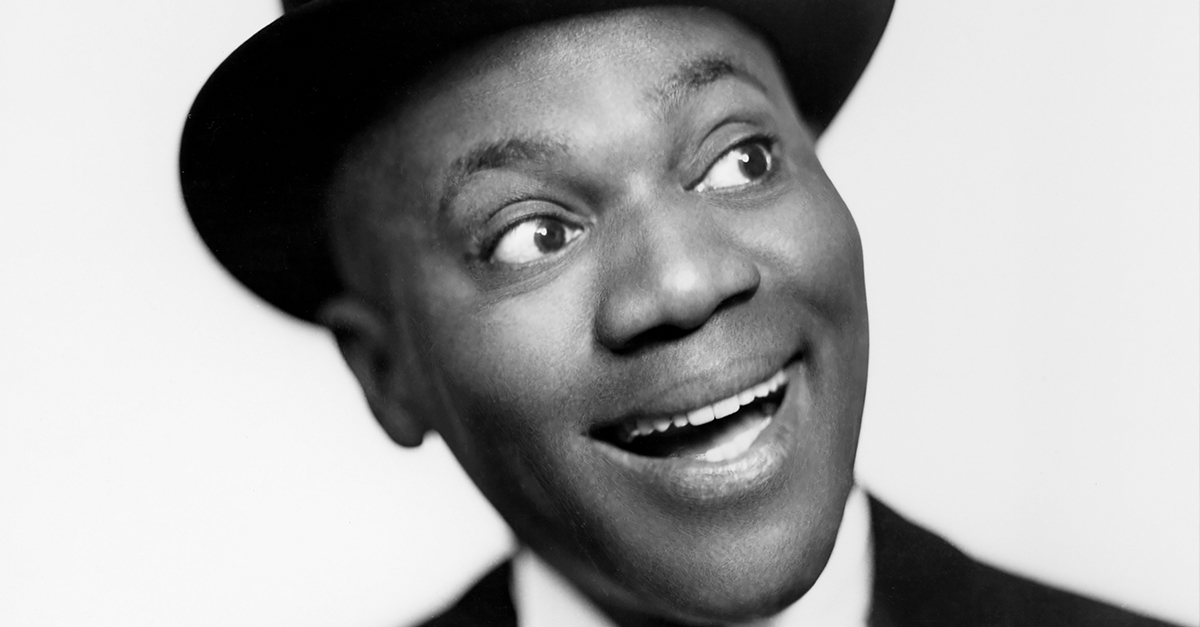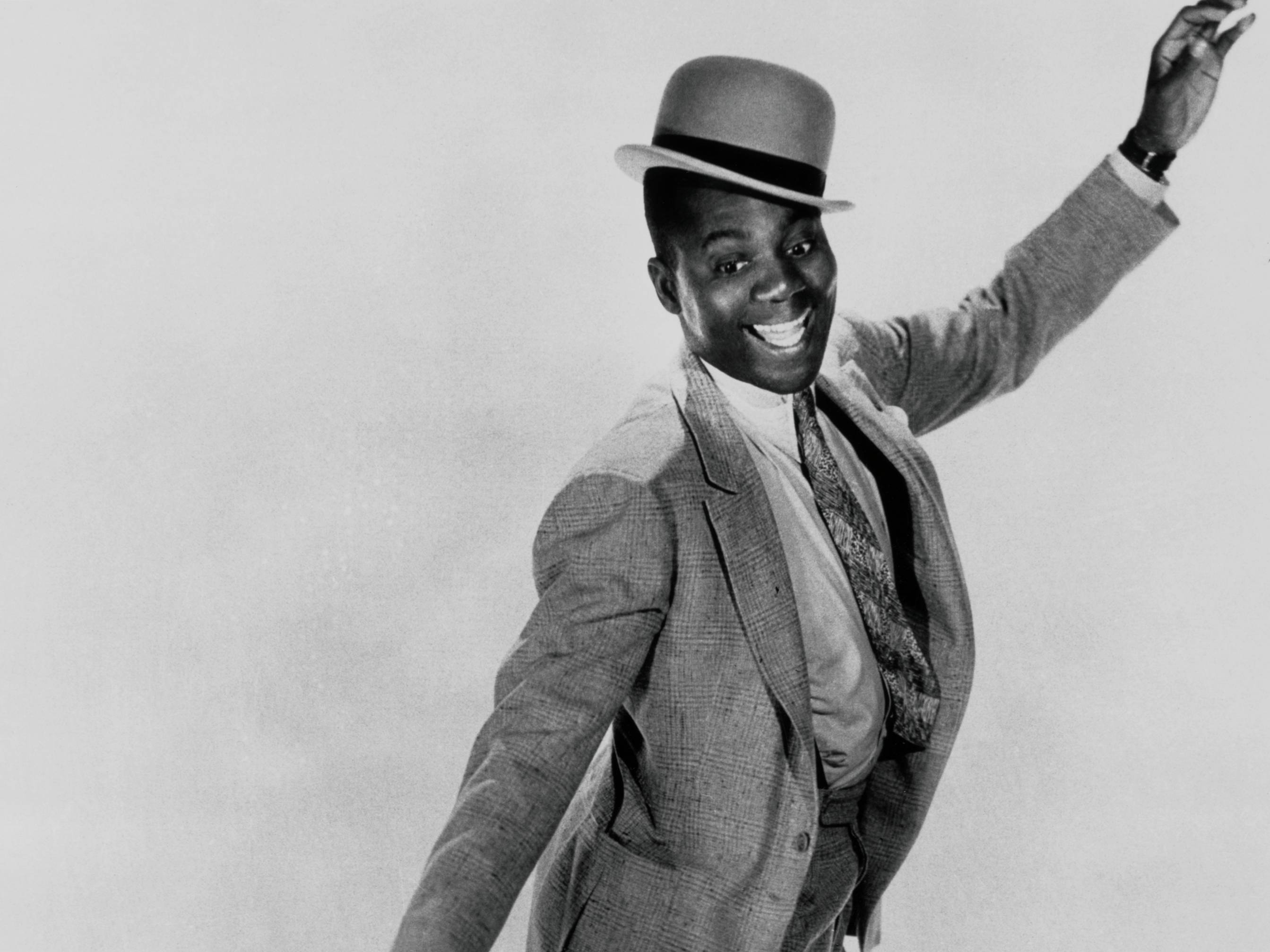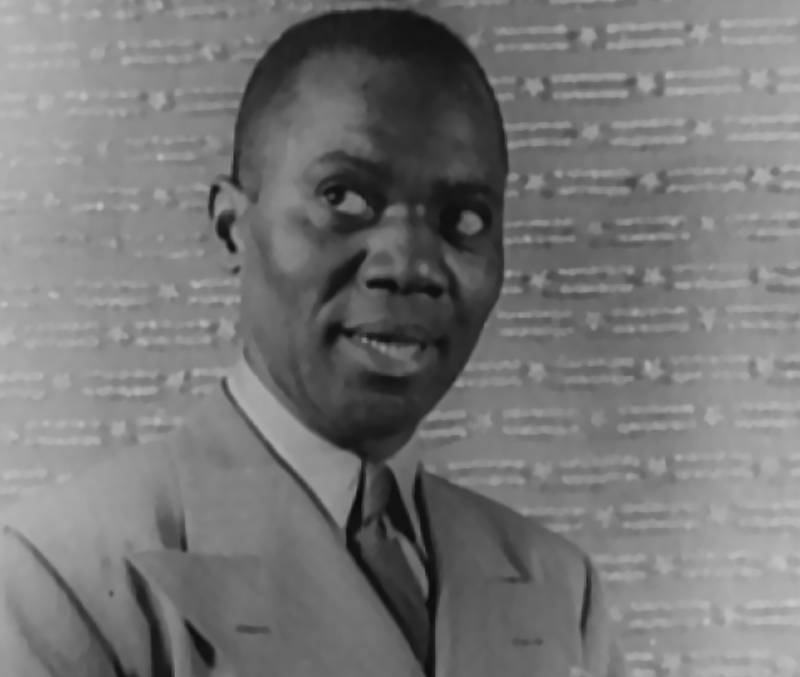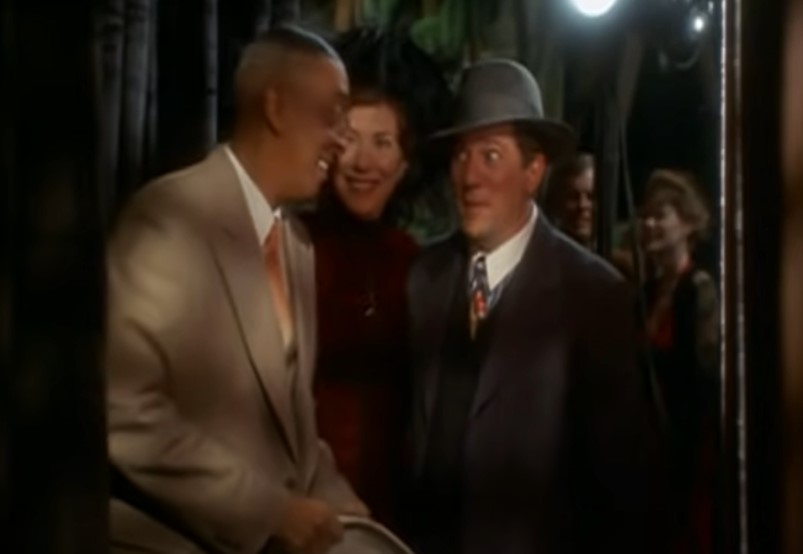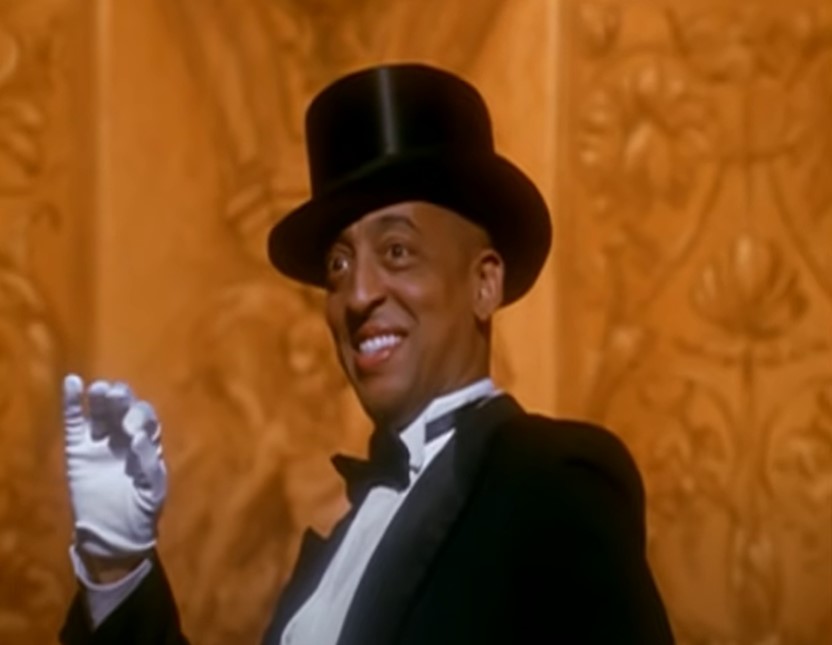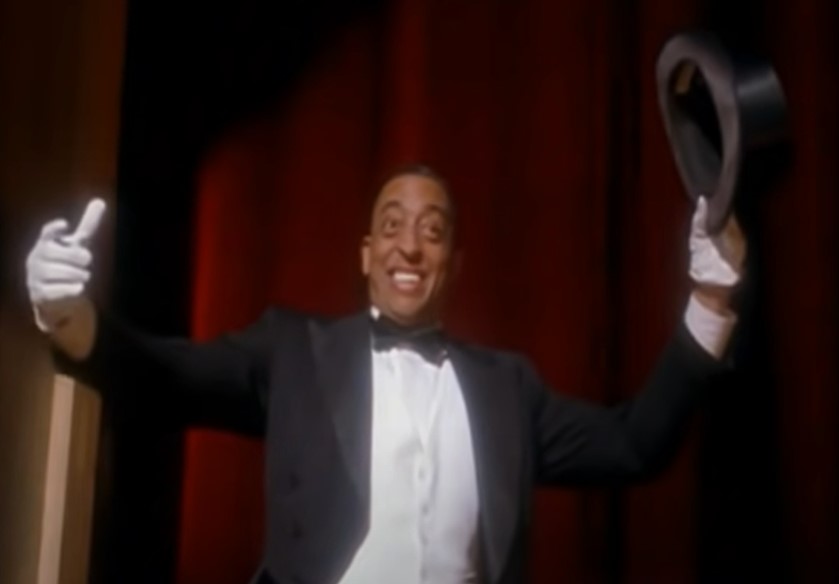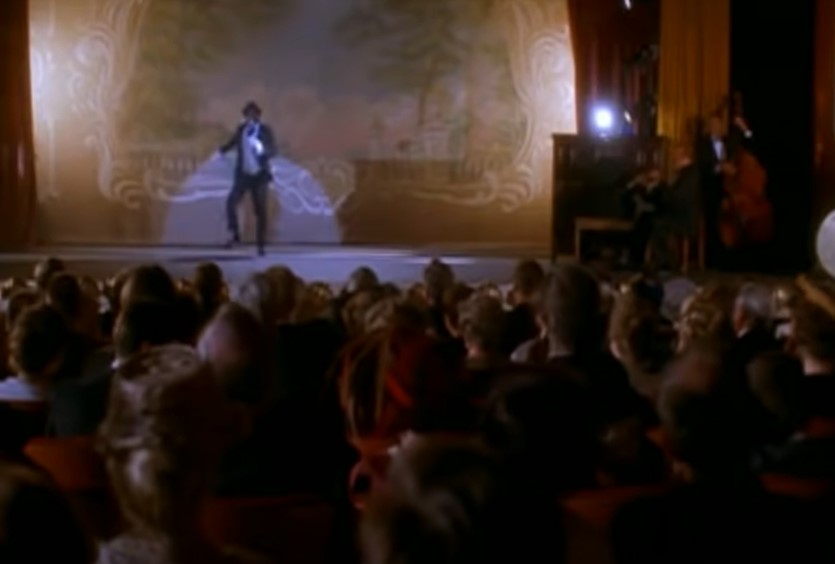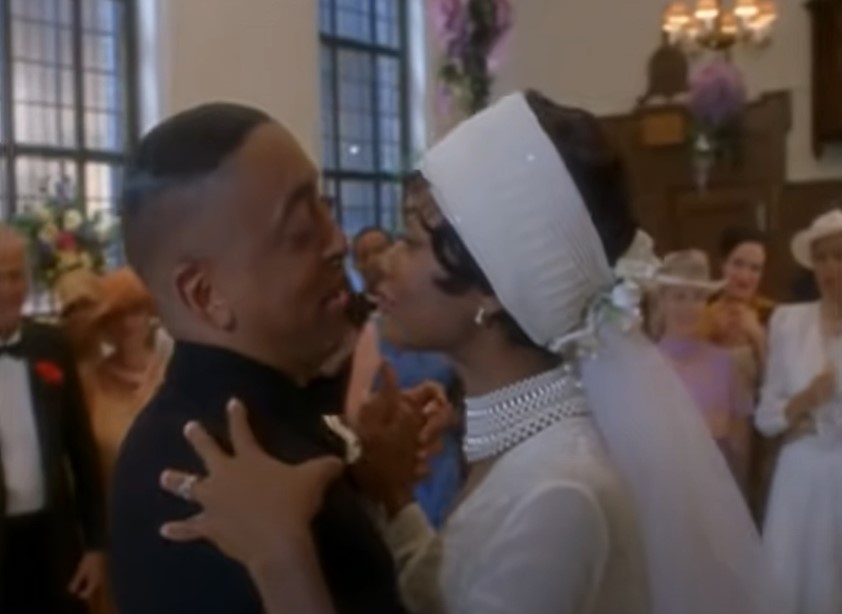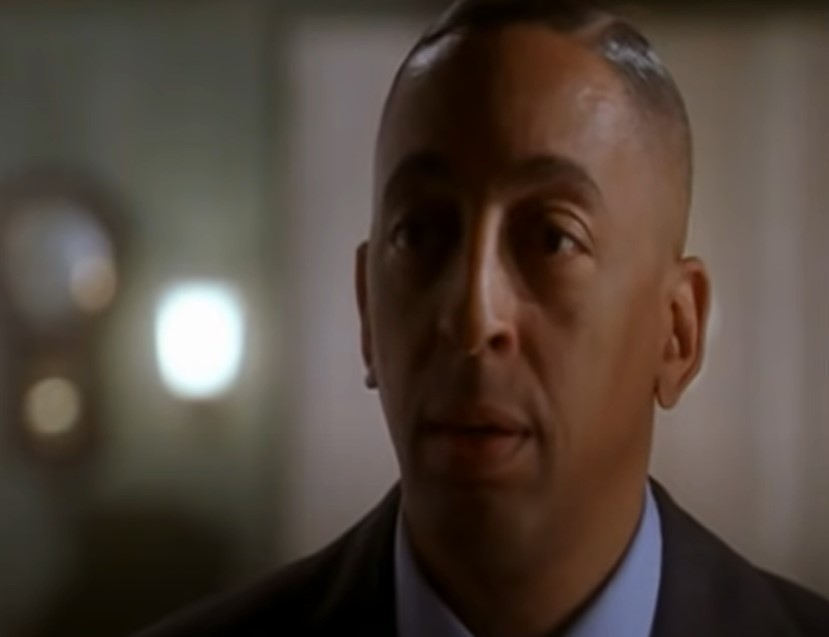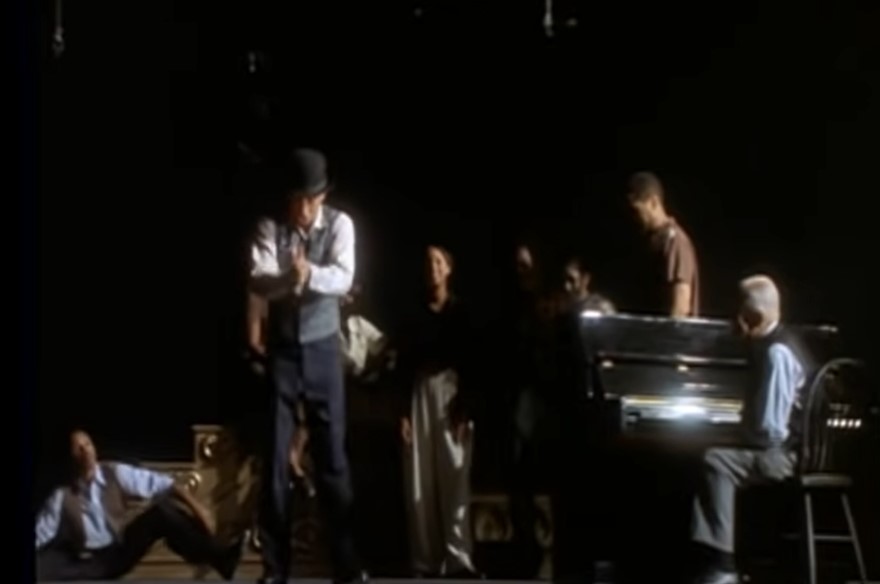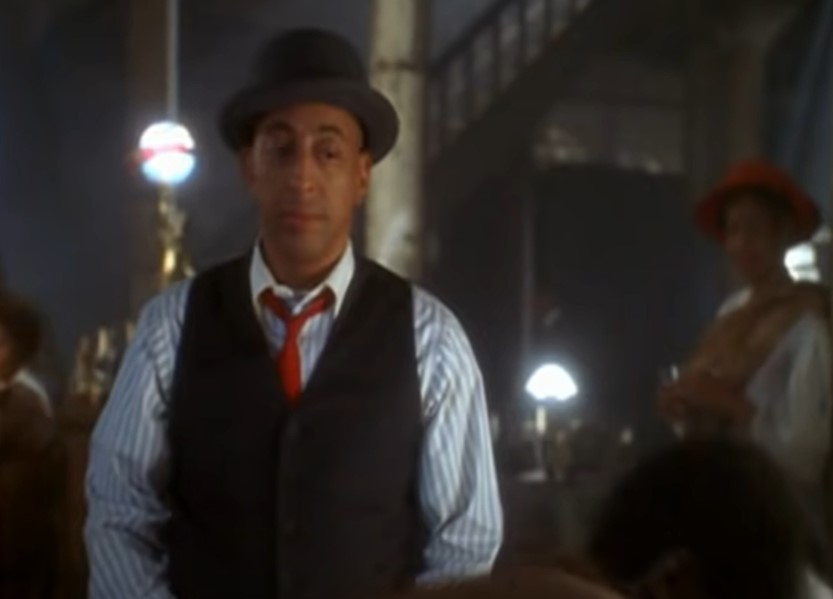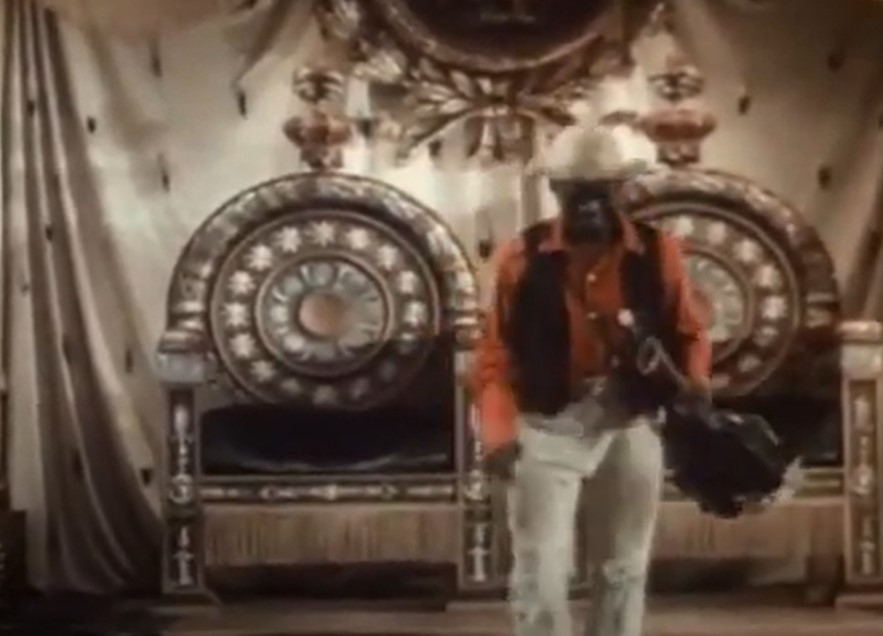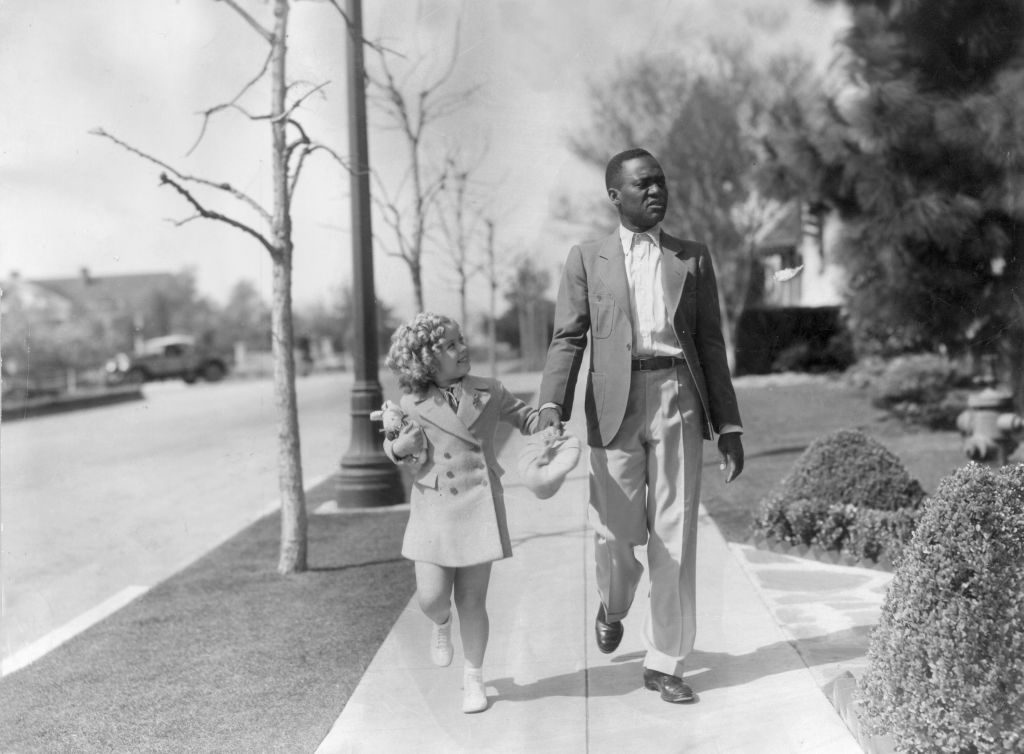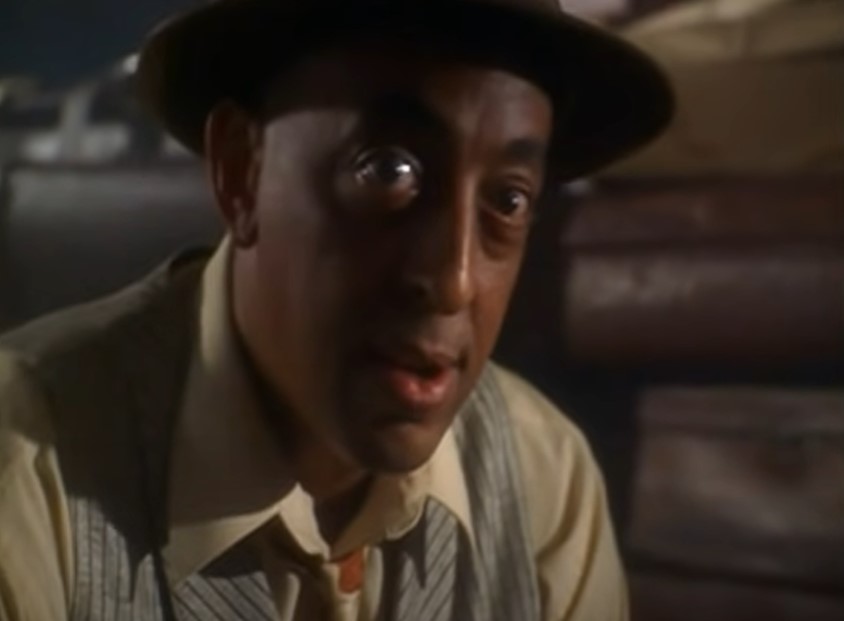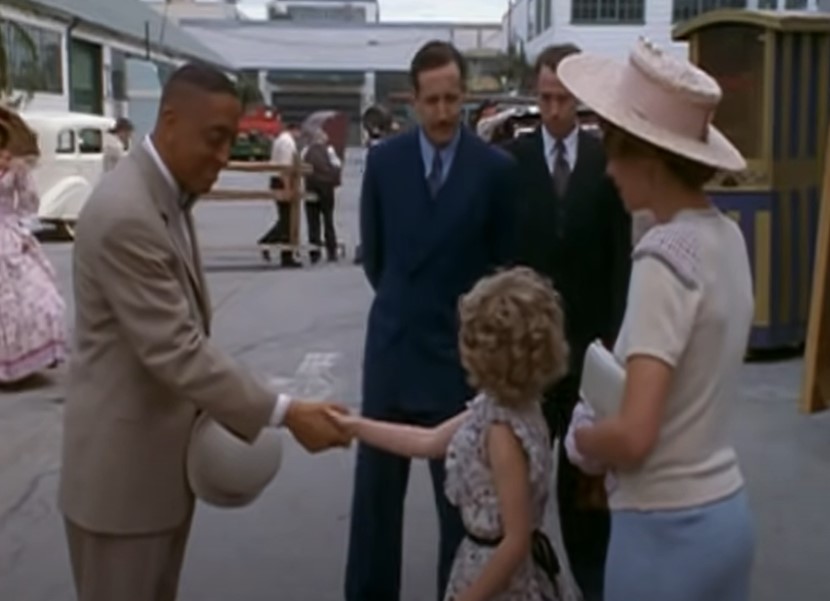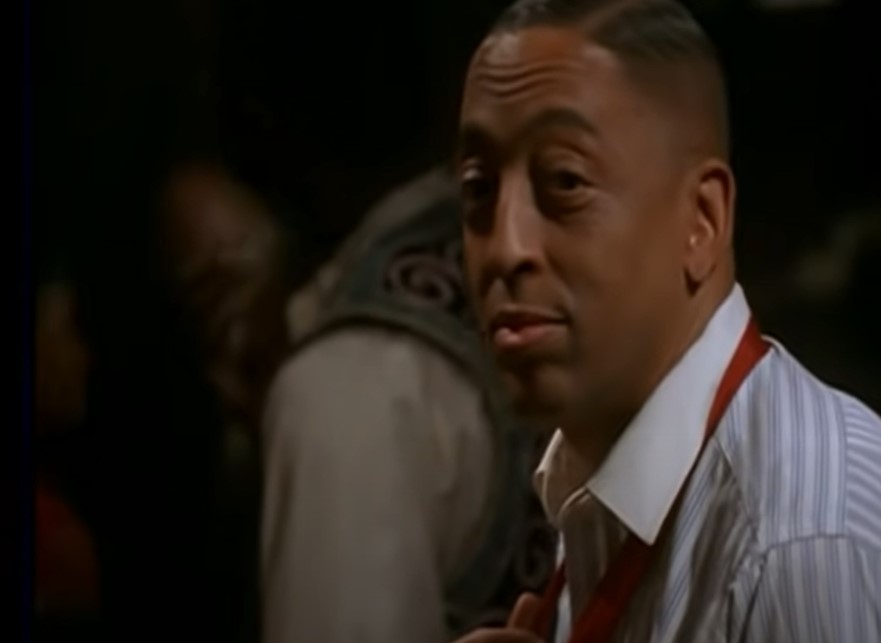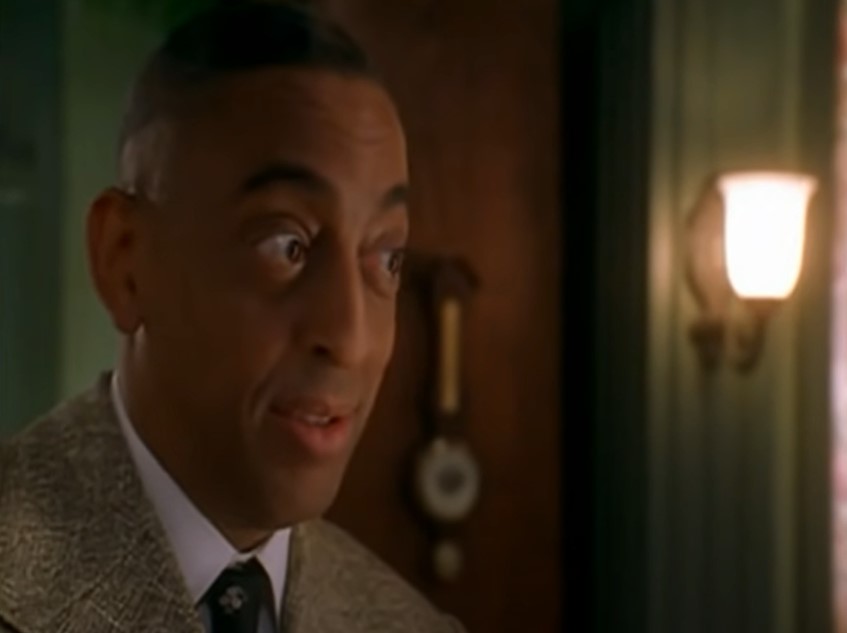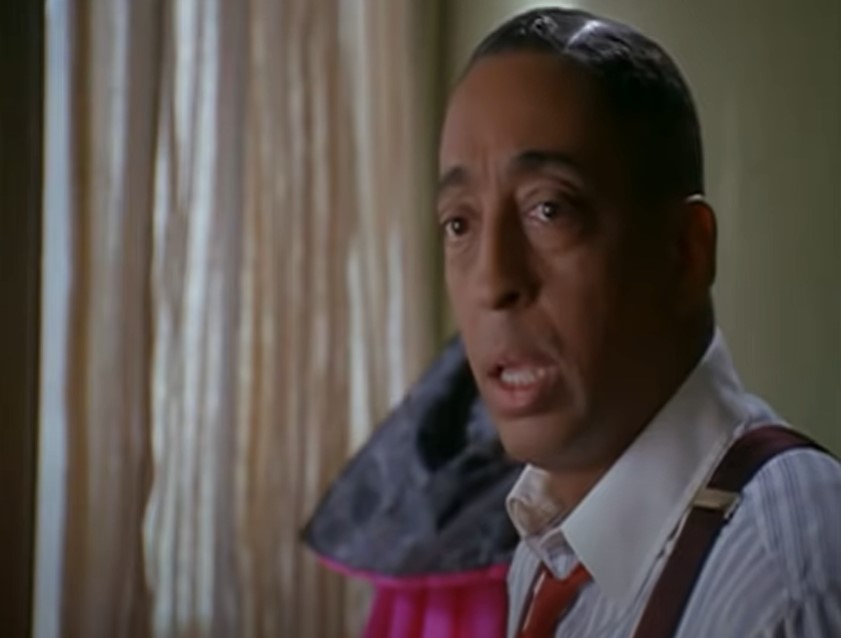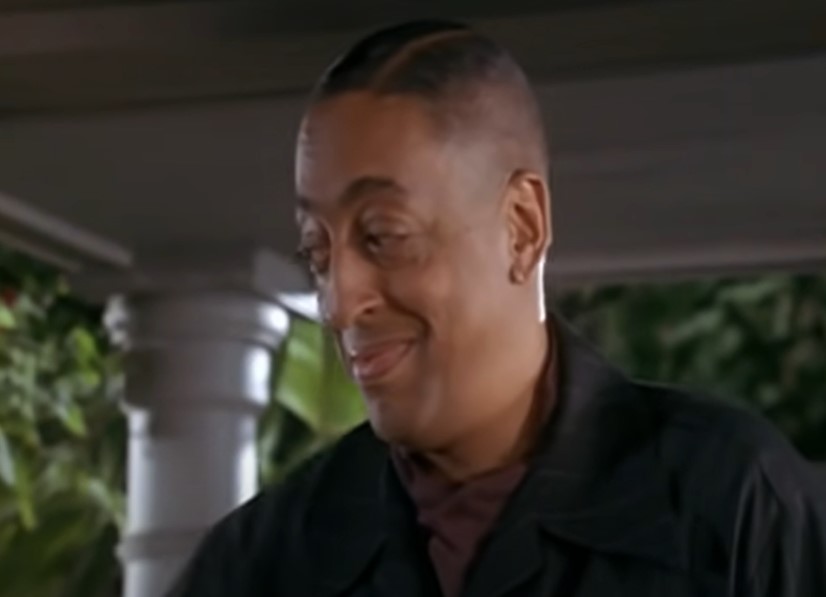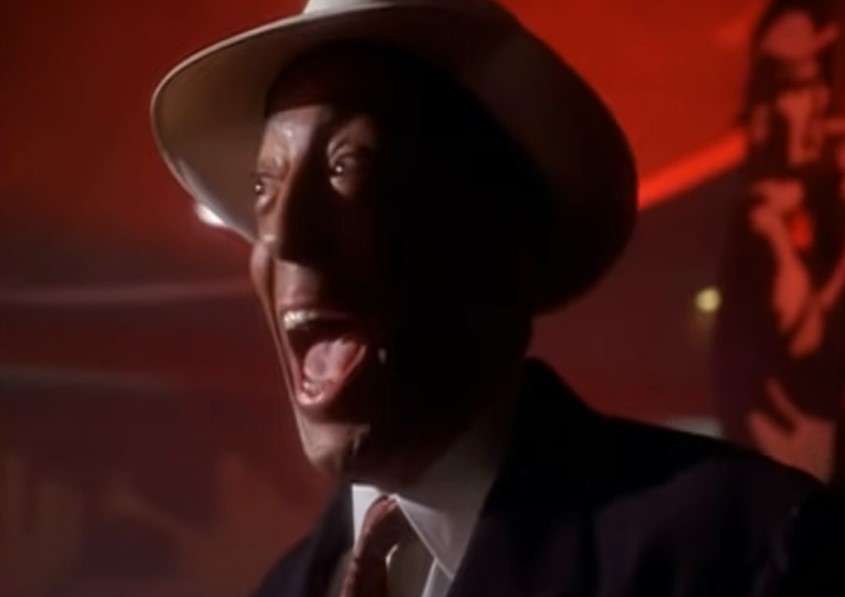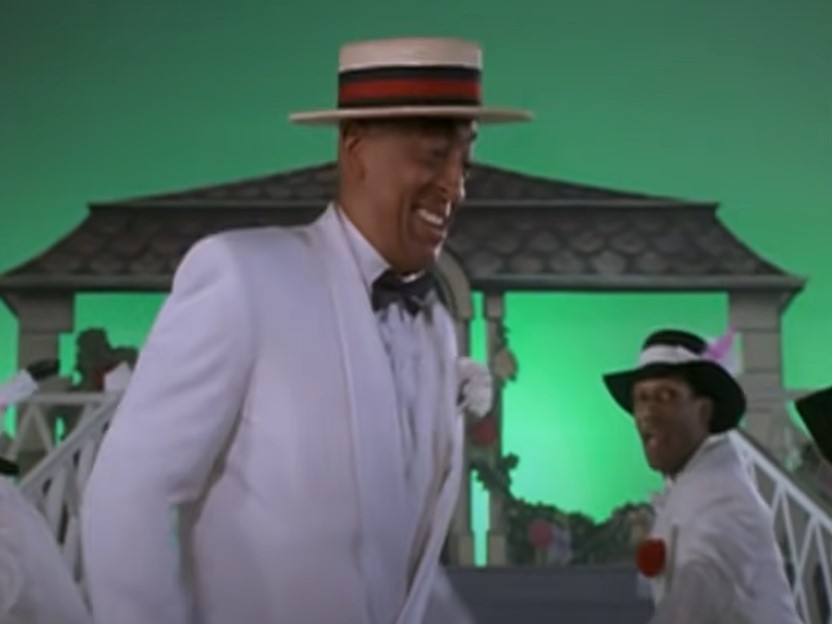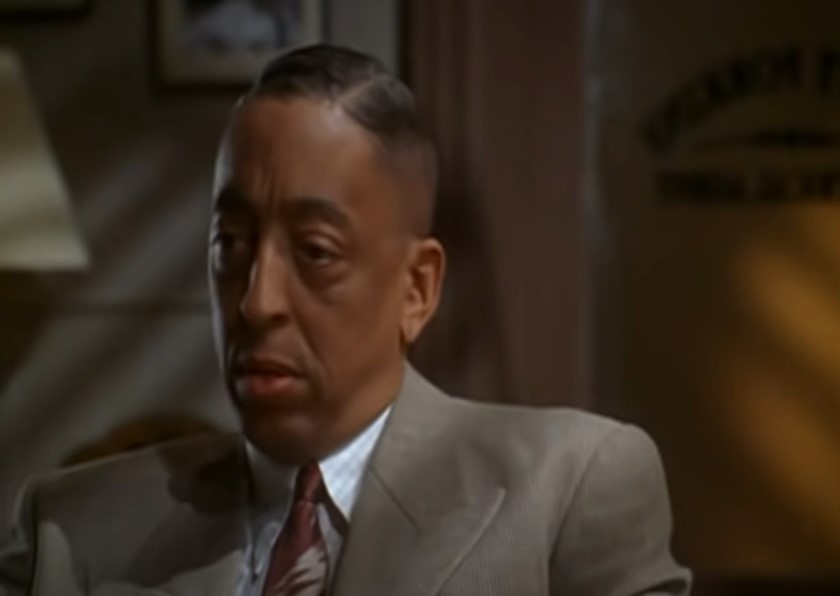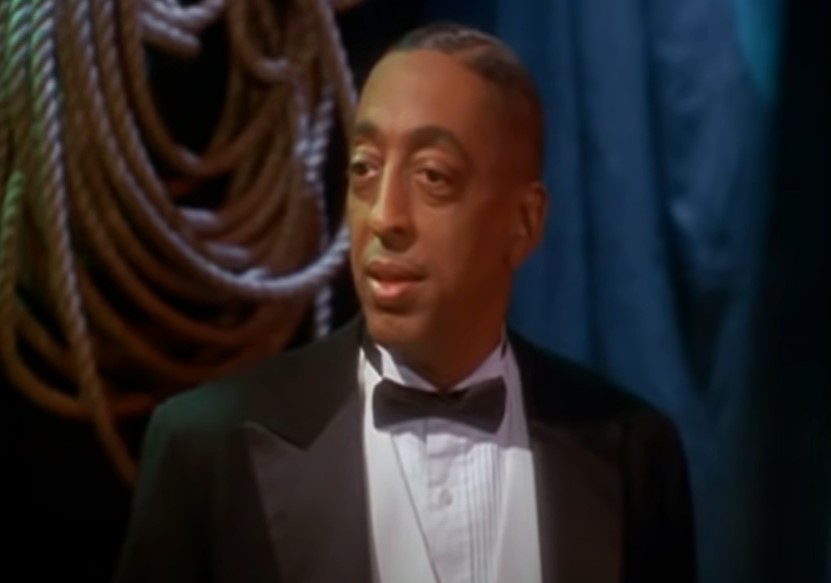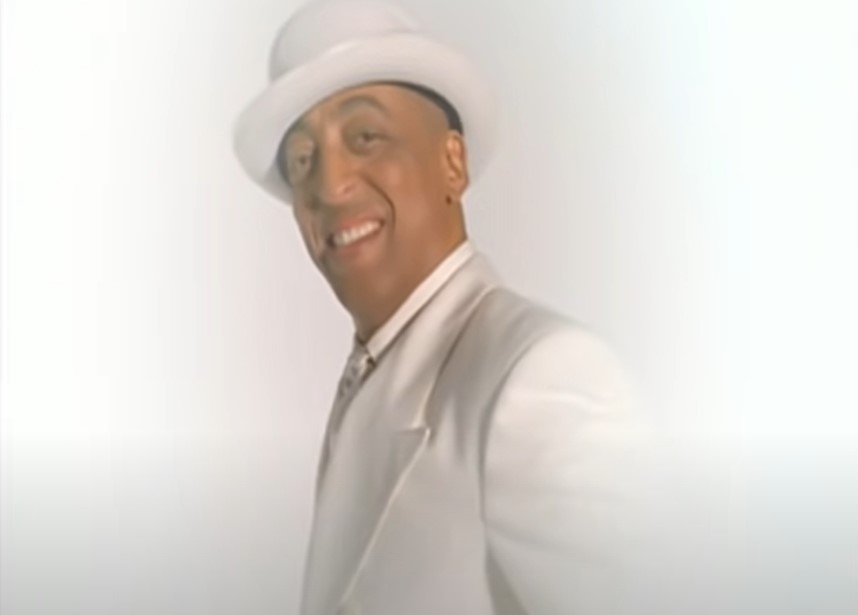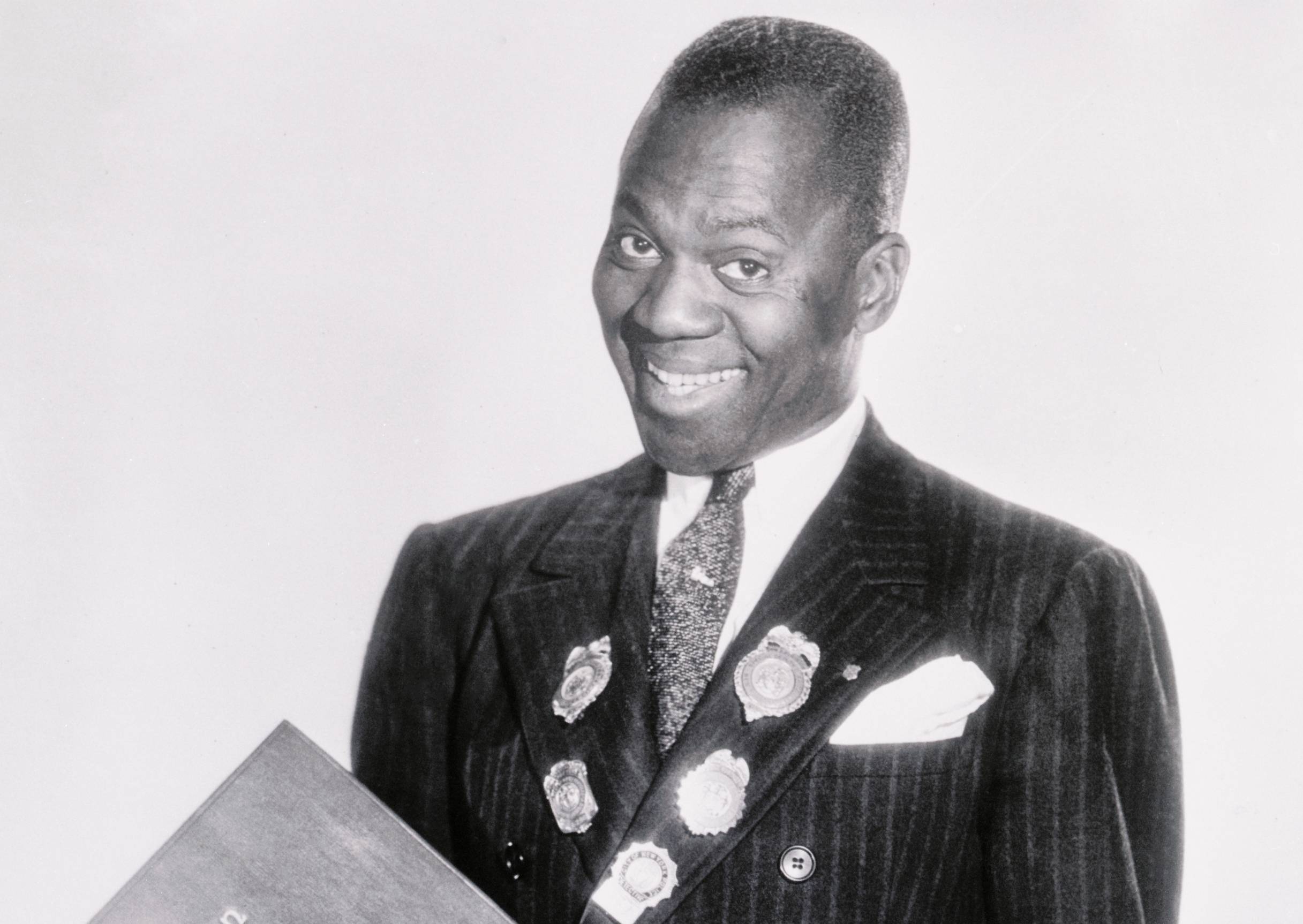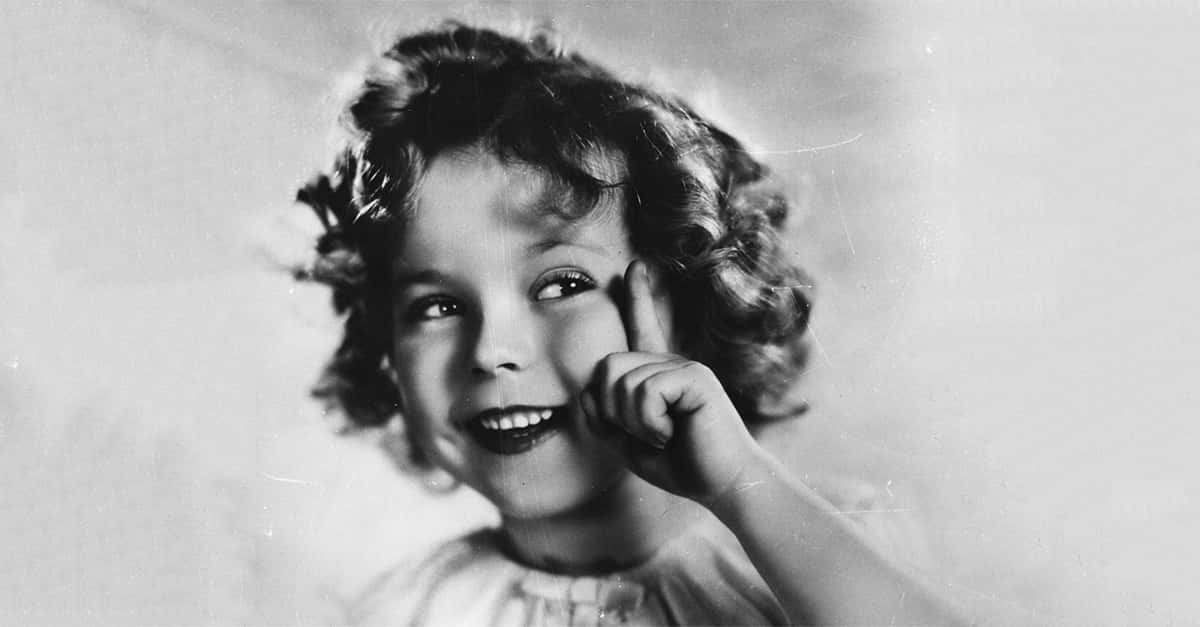Bill Robinson was his generation’s highest-paid Black entertainer. He earned millions—but it wasn’t until he died that his heartbreaking truth came out.
1. He Was A Contradiction
Bill Robinson was the number one tap dancer and eventually the highest-paid Black entertainer of his generation. But his nickname was quite puzzling. To some, "Bojangles" means happy-go-lucky, while to others it means someone who argues a lot. While this seems like a complete contradiction, these facts prove that Robinson satisfied both definitions of the word.
He had to. How else would he face the non-stop prejudice the world threw his way?
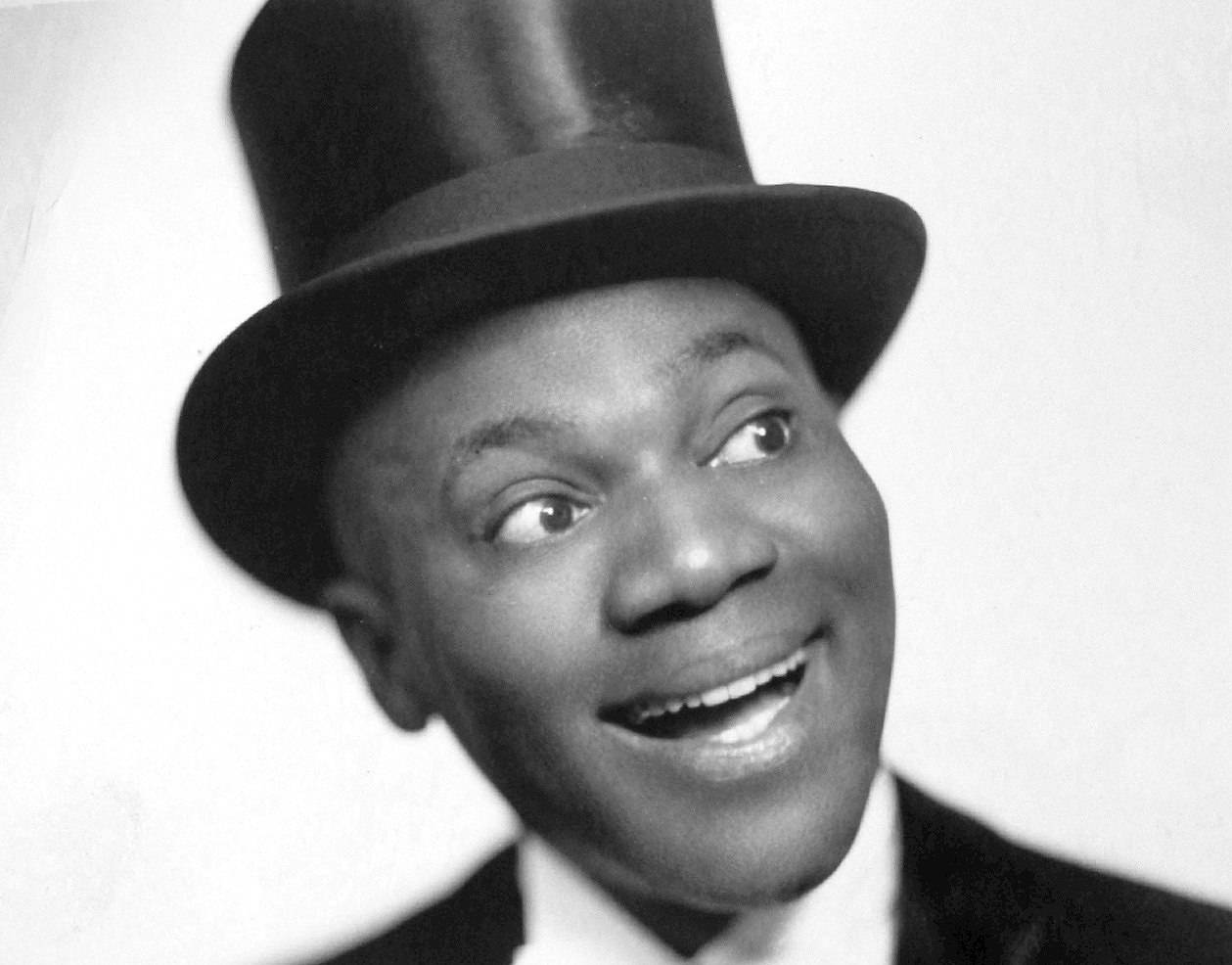 James Kriegsmann, Wikimedia Commons
James Kriegsmann, Wikimedia Commons
2. He Had A Tragic Beginning
Bill Robinson was born on May 25, 1878, in Richmond, Virginia. His father was a machinist and his mother led the church choir. Robinson and his brother William had very little time to get to know their parents. When Robinson was just six years old, they both unexpectedly passed—his father from heart disease and his mother from “unknown causes”.
With no parents, Robinson had to hit the streets. His survival depended on it.
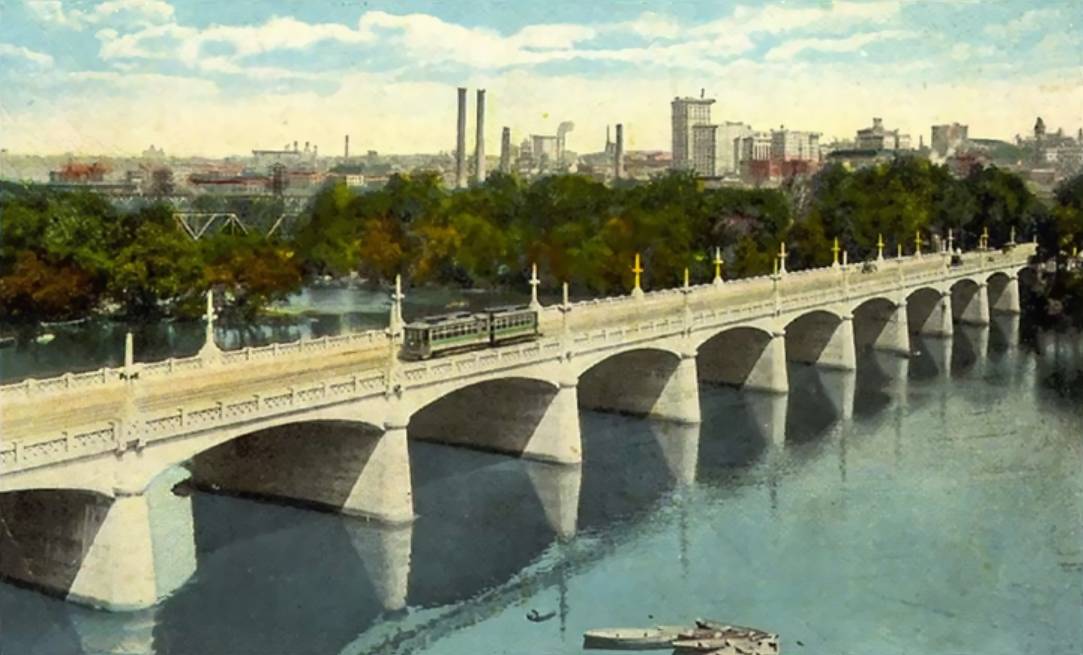 VCU Libraries, Wikimedia Commons
VCU Libraries, Wikimedia Commons
3. They Tossed Pennies
Robinson’s grandmother took over the task of raising the boys, and Robinson started earning pocket money. He danced for the folks waiting in line at the theater, or while drinking in outdoor pubs. Back then they called him a “hoofer," and the pay was just a few pennies tossed his way.
Against all odds, a promoter saw what Robinson could do and made him an offer.
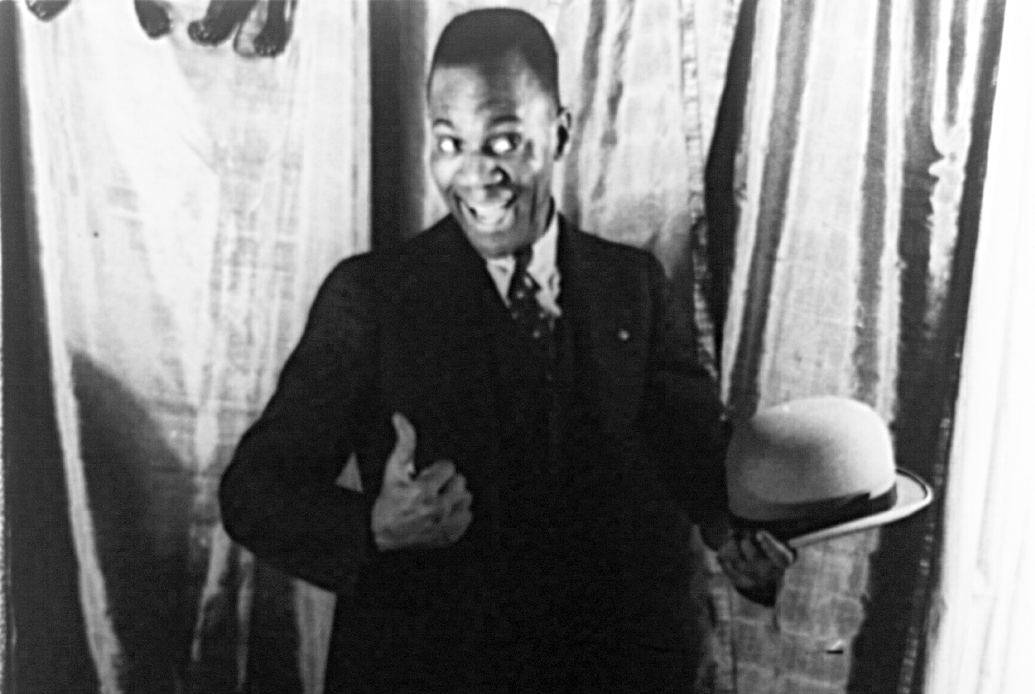 Carl Van Vechten, Wikimedia Commons
Carl Van Vechten, Wikimedia Commons
4. He Was Hooked
Because minstrel shows made fun of Black Americans, white performers played the Black characters wearing dark makeup on their faces. For some reason they also had groups of authentically Black children who sang and danced at the edge of the stage. This was Robinson’s first real job—and, in spite of the prejudice, it got him hooked on show business.
At a very young age, Robinson figured out that if he wanted to get anywhere in show business, he’d need to take a huge risk.
5. He Ran Away
By the age of 12, Robinson ran away and didn't stop running until he got as far as Washington DC. Sadly, one of his first offers meant going right back to where he started. He played a kid in a minstrel show. With no other options, he took the job, but when he got too old to do that, he had nothing to turn to.
Robinson was older now and back on the streets. If he didn’t find success now, the streets could become his permanent home.
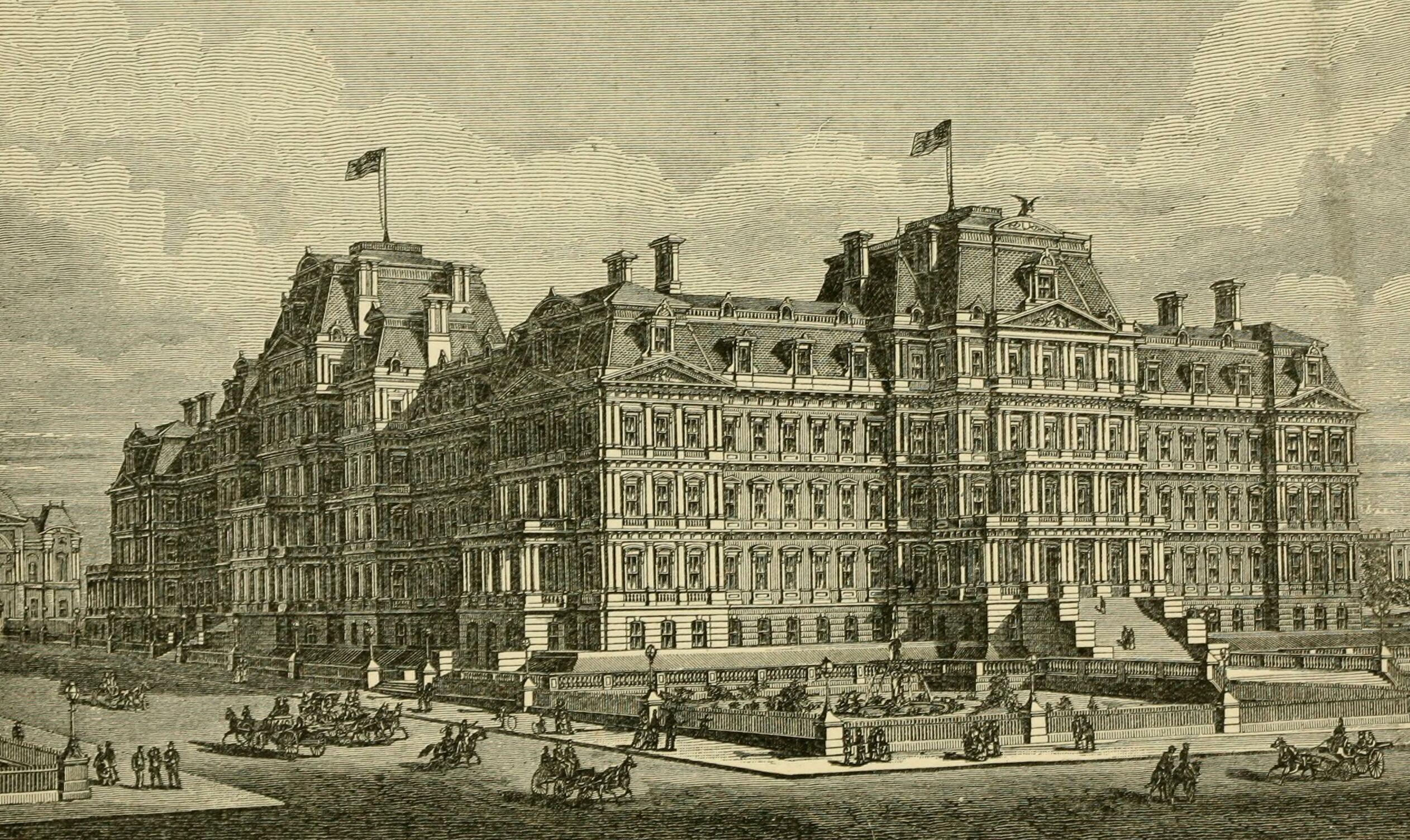 Burr, Frank A., Wikimedia Commons
Burr, Frank A., Wikimedia Commons
6. He Met A Rising Star
One friend he met on the streets was Asa Yoelson, who would grow up to be Al Jolson. Within a few years, Jolson would be the highest-paid white performer, and Robinson would be the highest-paid Black performer. Right now, they were just two kids working the street. If Robinson had known about his future fame, he never would have made this next life-threatening decision.
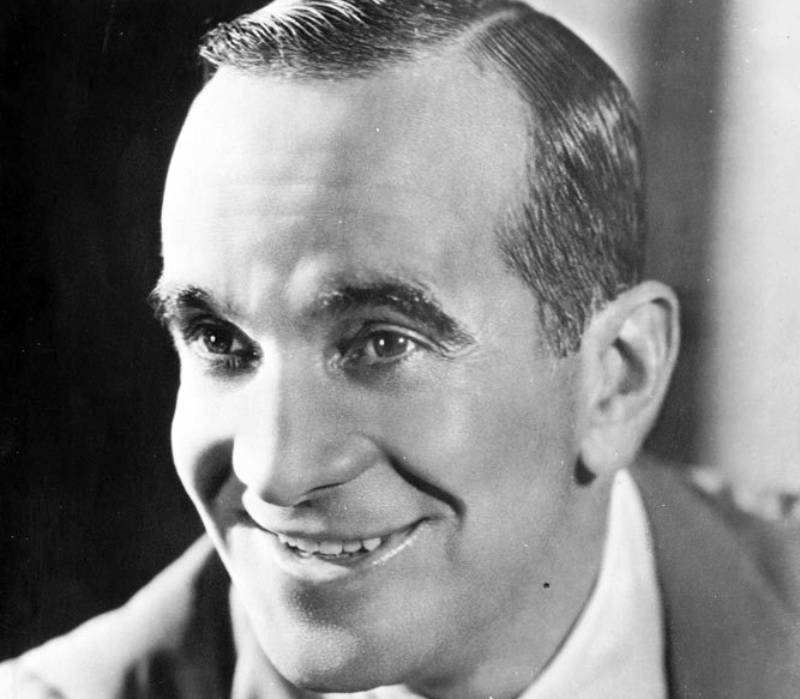 Film studio, Wikimedia Commons
Film studio, Wikimedia Commons
7. He Wanted To Serve
At the age of 20, Robinson surprised his family by returning home to Virginia, but he didn’t stay long. The US was in a battle with Spain, and Robinson wanted to serve his country. Well, he didn’t get very far before tragedy struck. When a second lieutenant was cleaning his rifle, it accidentally went off and hit Robinson.
Robinson decided he had to give show business one more chance. To do this, he put himself up to the ultimate challenge.
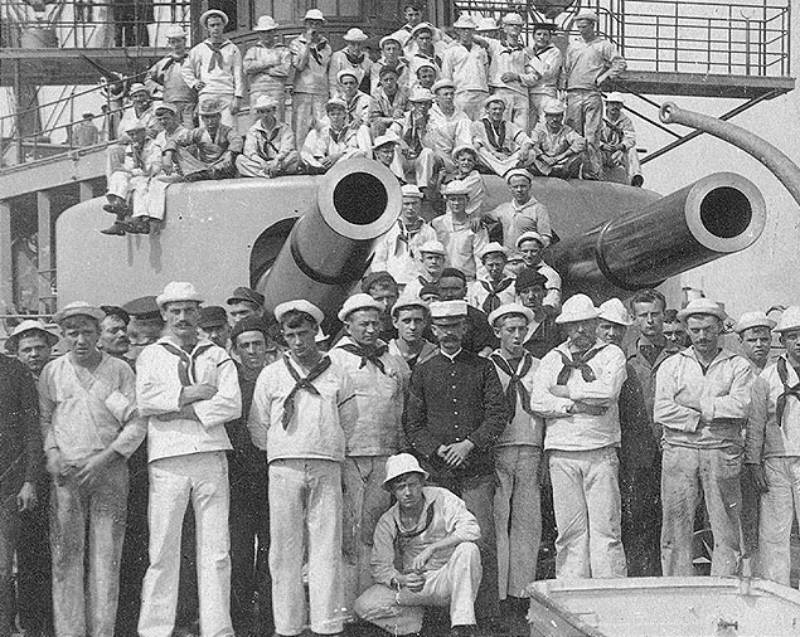 Unknown Author, Wikimedia Commons
Unknown Author, Wikimedia Commons
8. He Put Himself Out There
By the 1900s, Robinson had still not had much success as a performer. In desperation, he decided on his last ditch effort. He found the best dancer and challenged him to a dance contest. This was Harry Swinton, and the venue was Brooklyn’s Bijou Theater. To everyone’s surprise—including his own—Robinson walked away with the prize.
It was the break he was waiting for, but there was still something missing.
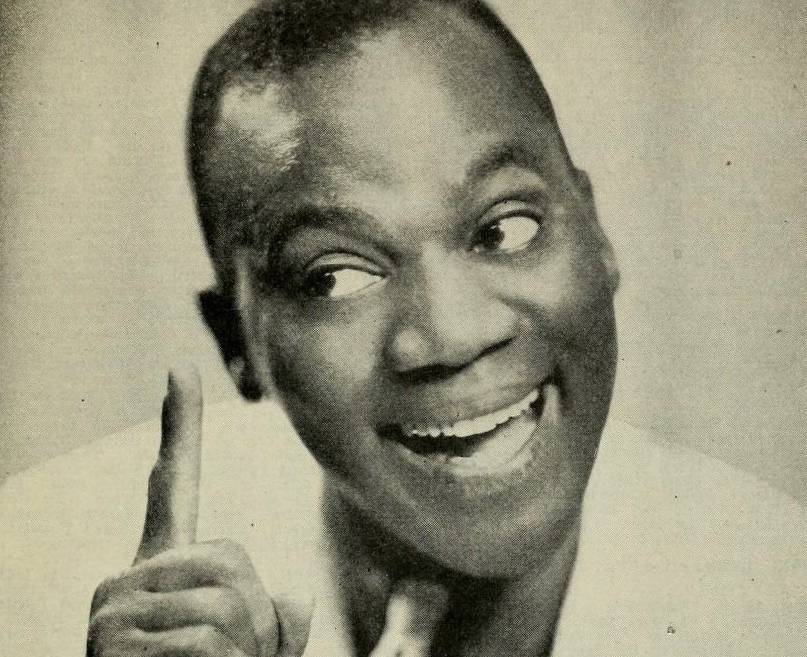 20th Century Fox, Wikimedia Commons
20th Century Fox, Wikimedia Commons
9. He Teamed Up
Back then, there was something called the "two-colored rule". This said that Black entertainers could not work as a solo act. To perform, Robinson would have to be in a troupe or at least a duo. Robinson quickly found a performer named George Cooper and off the two men went.
As it would turn out, this partnership with Cooper would save Robinson from a lifetime of pain.
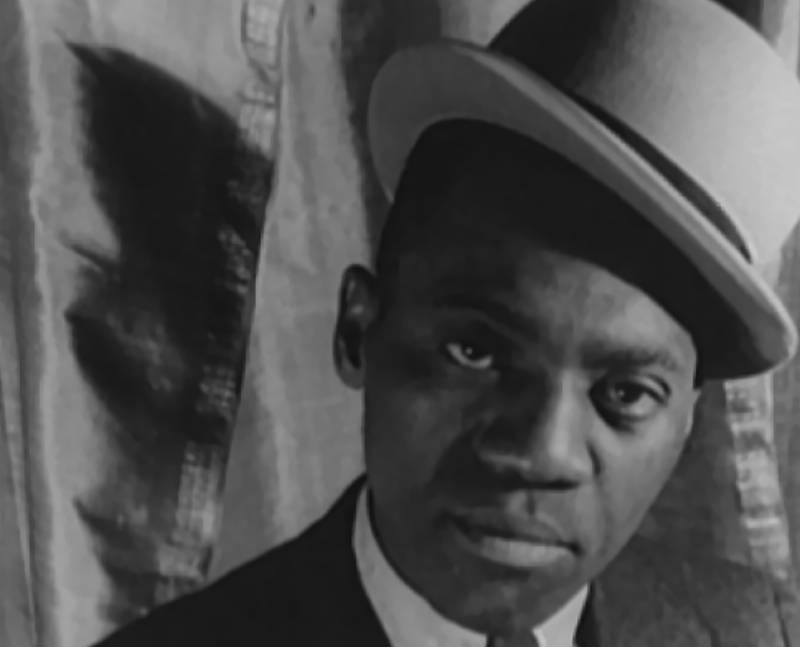 Carl Van Vechten, Wikimedia Commons
Carl Van Vechten, Wikimedia Commons

History's most fascinating stories and darkest secrets, delivered to your inbox daily.
10. He Had An Argument
In 1908, Robinson argued with a tailor over a suit he’d had made. But tragically, this dispute led to him being wrongly accused of a hold up in New York City. Unfortunately, Robinson didn't take didn’t take the false accusations seriously and failed to build a solid defense for himself. It wasn't long before the whole debacle spiraled into a nightmare.
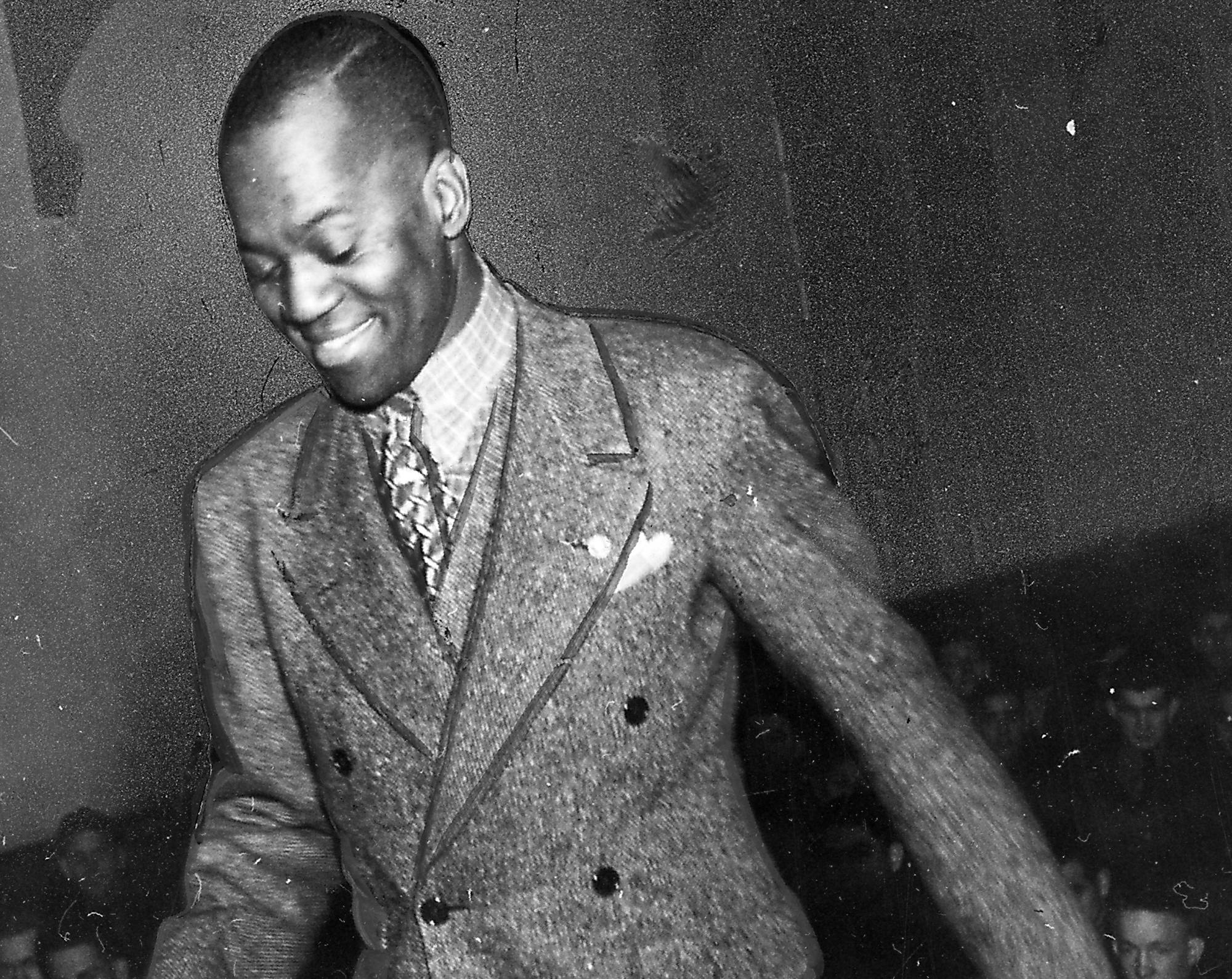 Afro Newspaper/Gado, Getty Images
Afro Newspaper/Gado, Getty Images
11. It Was A Nightmare
On September 30, 1908, a judge convicted Robinson and sent him up for a maximum of 15 years of hard labor. Thank goodness Robinson had his partner. Cooper quickly rose to his buddy’s defense and got him off. He even got Robinson's accusers in trouble.
Cooper was quite literally Robinson’s hero. But sadly, their days together would soon come to an abrupt end.
12. They Believed In Him
Robinson continued performing with Cooper, but in 1914 he met some people who would come between them. This was vaudeville star Rae Samuels—AKA “The Blue Streak of Vaudeville”—and her husband Marty Forkins. Marty Forkins was Samuels’ manager, and they both saw something special in Robinson.
Forkins had big plans for Robinson, and it meant tearing him away from Cooper.
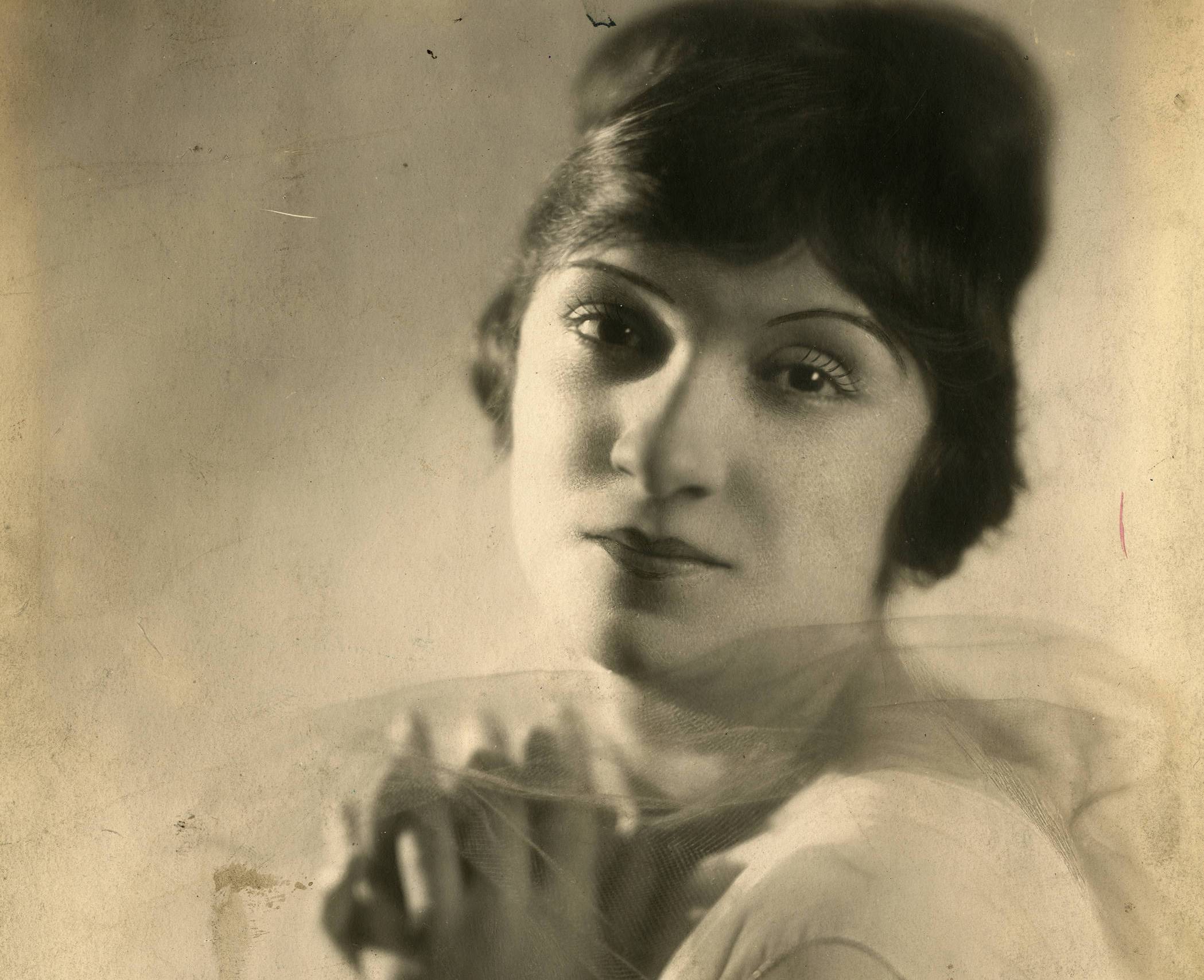 University of Washington, Wikimedia Commons
University of Washington, Wikimedia Commons
13. They Wanted To Change Things
Forkins plan for Robinson was for him to go solo. Forkins knew about the two-colored rule, but he thought it was time to break it. Forkins skillfully erased George Cooper from Robinson’s history and presented Robinson as someone who’d always been a solo act. This worked, and they broke the unspoken rule.
As a solo act, Robinson was now earning close to $3,500 a week. He took the world by storm, but it wasn't by chance. He had a system that guaranteed success.
14. He Had An Odd Skill
On the occasions when Robinson wasn’t the headlining act, he set up unusual events to attract attention to himself. One of the events was a running backwards demonstration. As it turned out, Robinson was very, very fast and ended up holding the world’s record for running backwards until 1977.
Of course, gimmicks like backwards running were just to get spectators in seats. When it came to the show, Robinson had an astonishing way to make sure he stood out from the others.
15. He Was A Pioneer
The reason Robinson was dancing circles around his peers was because they all danced on flat feet. Robinson turned the art form on its head by dancing on his tiptoes. But that wasn’t all. He also was one of the first to use a technique called the “stair dance”. It’s not clear whether he invented this complicated step or not.
We do know that he went to extreme measures to make it his own.
16. He Tried To Own It
The stair dance was unique—and extremely difficult—because each step had a different rhythm. Robinson was almost single-handedly making it popular, so he wanted to make it just his. To do this, he took the unusual step of filing a patent. The US patent office crushed Robinson’s hope when it told him they were not in the business of putting patents on dance steps.
Robinson put this disappointment behind him and focussed on his rather mysterious love life.
17. His Marriages A Mystery
Back in 1907, Robinson had married Lena Chase. All we know about this marriage is that they divorced in 1922. The next mystery revolved around his second wife, Fannie S Clay. When interviewed, husband and wife strangely gave out completely different dates of the union and, for some reason, even different locations.
One thing we do know is that Clay became Robinson’s manager, and with her, he was about to tap dance his way into fame.
18. He Gave It A Boost
In 1928, there was a show on Broadway called Blackbirds of 1928. Strangely, the performers were all Black and the audiences were all white. The show was getting only so-so reviews, so the producer decided the show needed a boost. He called up Robinson to join as an extra feature and hoped for the best.
All eyes were on Robinson. Success would mean stardom, and failure would surely send him into obscurity.
19. He Was The Greatest Of All
With the addition of Robinson, Blackbirds of 1928 became the “the most successful all-black show ever on Broadway”. No less than seven newspapers called Robinson the “greatest of all dancers” and he had become a household name overnight. Of course, Robinson went out of his way to show where his loyalties lay.
20. He Was An Ambassador
It’s not exactly clear how Robinson felt about being an “ambassador to the white world," but we do know that he did attempt to temper it. He kept his foot in Black community by hanging out at places like the Hoofers Club in Harlem. Here, he taught the younger generation how to tap dance and also took part in his vice of choice, gambling.
Robinson had conquered Broadway, his next line of attack would take him clear across the country.
21. He Got Cut
Robinson’s film debut came in 1930, but not everyone got a chance to see him. His scenes in Dixiana stand a little outside the main storyline, and it was for a shocking reason. Producers knew that in the Southern states audiences didn’t want to see Black performers. For this reason, they filmed it so Robinson’s scenes could be easily cut without interrupting the story.
That just sounds wrong. Well, good luck cutting Robinson out of his next film.
22. He Stayed In The Picture
Robinson was the star of Harlem is Heaven and was in almost every scene. So, deleting him from the movie was a complete impossibility. He’d beaten the haters but, sadly, the film didn’t do well at the box office and Robinson had to return to more mainstream films. No matter, Robinson still had his legions of fans, and they were about to give him a huge honor.
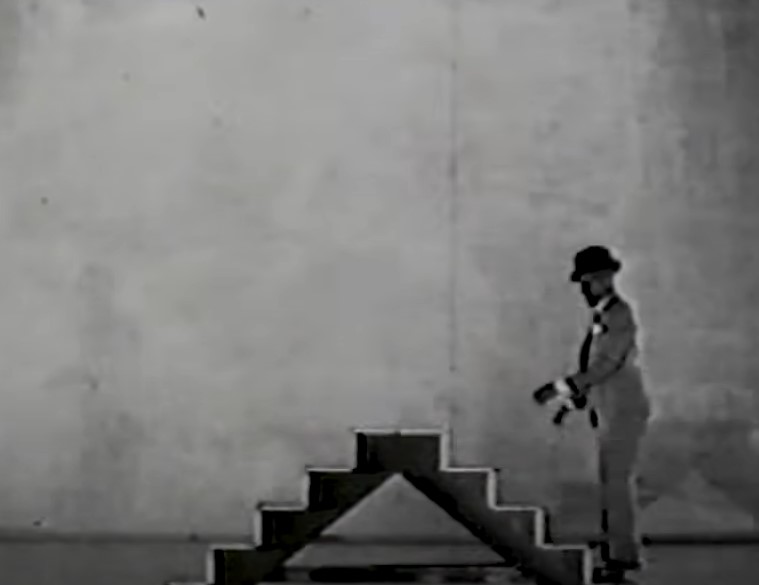 Lincoln Motion Picture Company, Harlem Is Heaven (1932)
Lincoln Motion Picture Company, Harlem Is Heaven (1932)
23. They Made Him Boss
Robinson was a successful star and, maybe more importantly, he was a generous one. For all his contributions to causes in Harlem, they made him honorary mayor. As mayor, Robinson continued to give. He performed in 3,000 benefits to help the needy people of Harlem. He’d earned the love of all of Harlem, and now he’d have to earn the love of just one little girl.
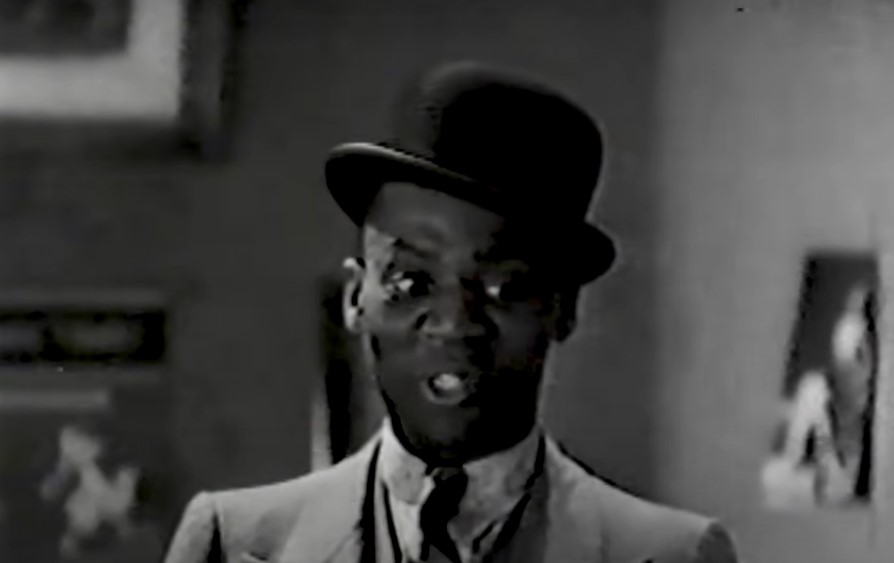 Lincoln Motion Picture Company, Harlem Is Heaven (1932)
Lincoln Motion Picture Company, Harlem Is Heaven (1932)
24. They Put Him To A Test
Before she turned seven years old, Shirley Temple had already appeared in more than 10 films. The people at Fox wanted to try something different with her, and that something different was pairing her with a Black costar. The first name that came to the producers’ lips was Bill Robinson. They knew he could dance and sing, but they weren’t sure about his acting.
They decided to put him to the test.
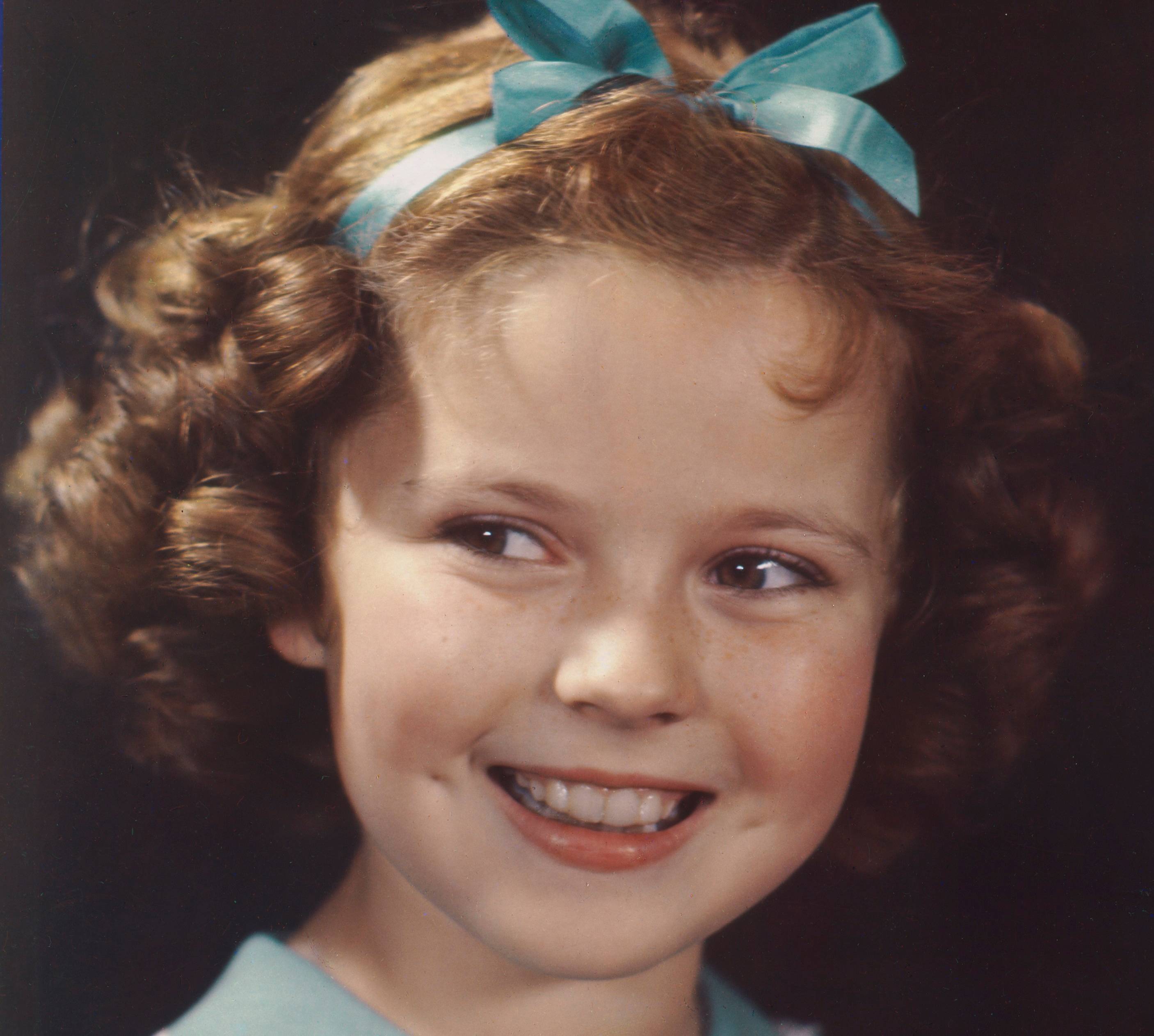 National Portrait Gallery, Wikimedia Commons
National Portrait Gallery, Wikimedia Commons
25. They Needed Chemistry
As it turned out, Robinson could certainly act, and they brought him on board to meet Temple. Of course, for this experiment to work, Robinson and Temple needed to have chemistry. Temple later remembered one of her first encounters with Robinson—how holding his hand was such a memorable experience.
One of their first conversations was quite simply the definition of adorable.
26. They Called Each Other Names
Temple felt quite comfortable walking hand in hand with Robinson. She coyly asked him if she could call him “Uncle Billy”. Robinson was okay with that but had a request of his own. He wanted to call her “darlin’”. That’s how it went with these two. They always walked hand in hand, and he always called her darlin’.
Of course getting along was all well and good, but these two still had to make their movie into a hit. Robinson wanted to teach temple his famous stair dance—but there was just one problem.
27. It Came In A Dream
The film Robinson was making with Temple was 1935’s The Little Colonel. The producers wanted a dancing duet with Robinson and Temple, and they wanted Robinson to create it. The thing was, the steps for the stair dance were far too difficult to teach a child—even one as talented as Temple—in a few short days.
He did, however, come up with a brilliant solution.
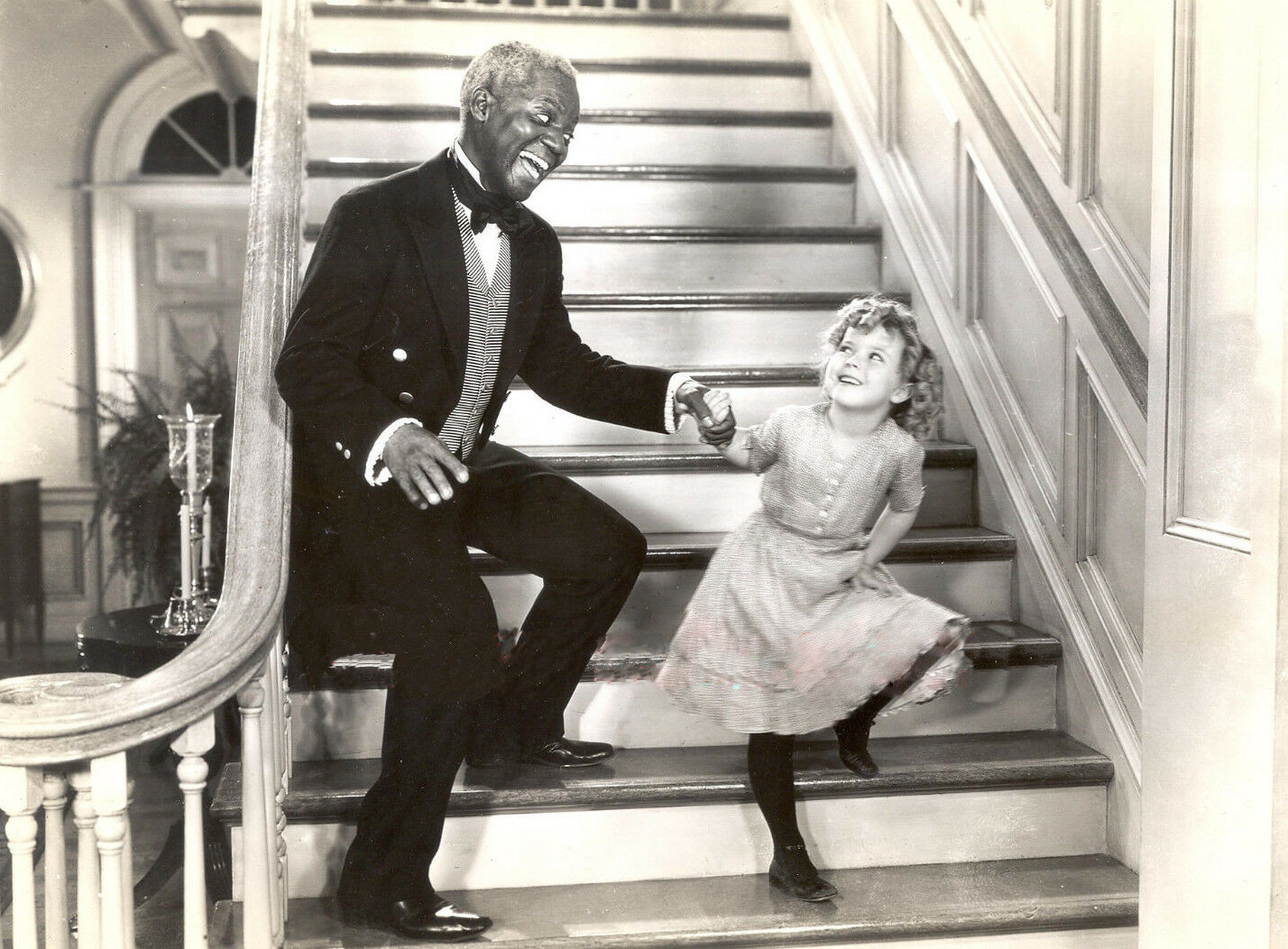 20th Century Fox, Wikimedia Commons
20th Century Fox, Wikimedia Commons
28. He Used A Trick
To make it appear that Temple was doing the same complex steps that he was doing, Robinson taught her to get that extra tap sound by kicking the stair face. Well, it worked, and the scene became an instant classic, but it did have its haters.
29. It Was Something New
The staircase dance scene with Robinson and Temple contained something audiences had never seen before. A Black and white, male and female dancing duo. So, even though it was the highlight of The Little Colonel, theaters in the Southern States had the scene removed. In fact, they cut any moment where Robinson even touched Temple.
This kind of prejudice was like a menacing cloud over Robinson’s career. Not to worry, he was about to break down a major Hollywood barrier.
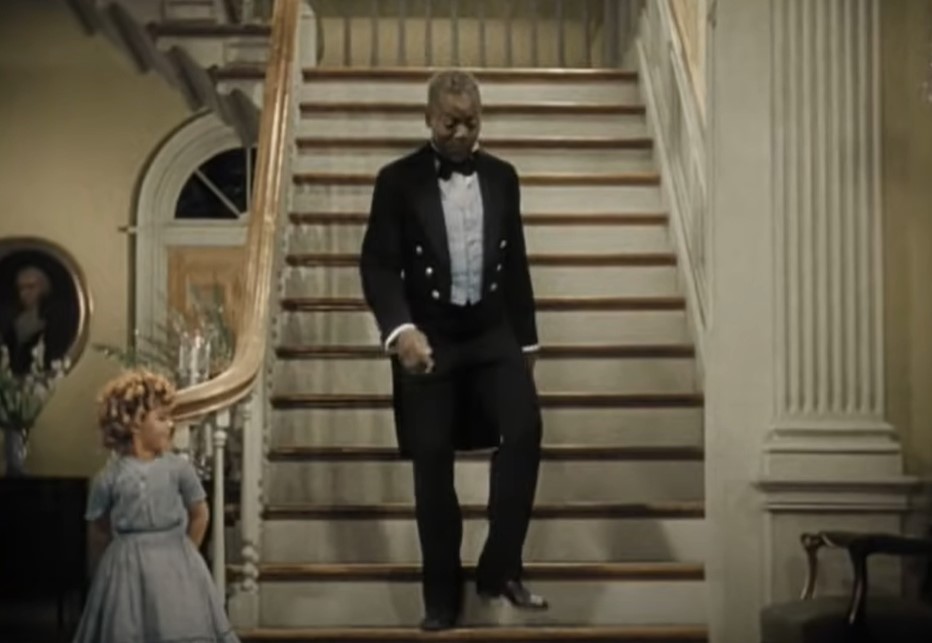 Fox Film, The Little Colonel (1935)
Fox Film, The Little Colonel (1935)
30. He Broke A Taboo
Robinson was becoming a hot commodity in Hollywood, and this status allowed him to stop playing any more stereotypical roles. He was also able to crush another barrier. This was the taboo against Black actors playing romantic leads. His appearance in 1937’s One Mile From Heaven opposite Fredi Washington put an end to that.
Robinson fought hard for Black rights, but some people thought he didn’t work hard enough.
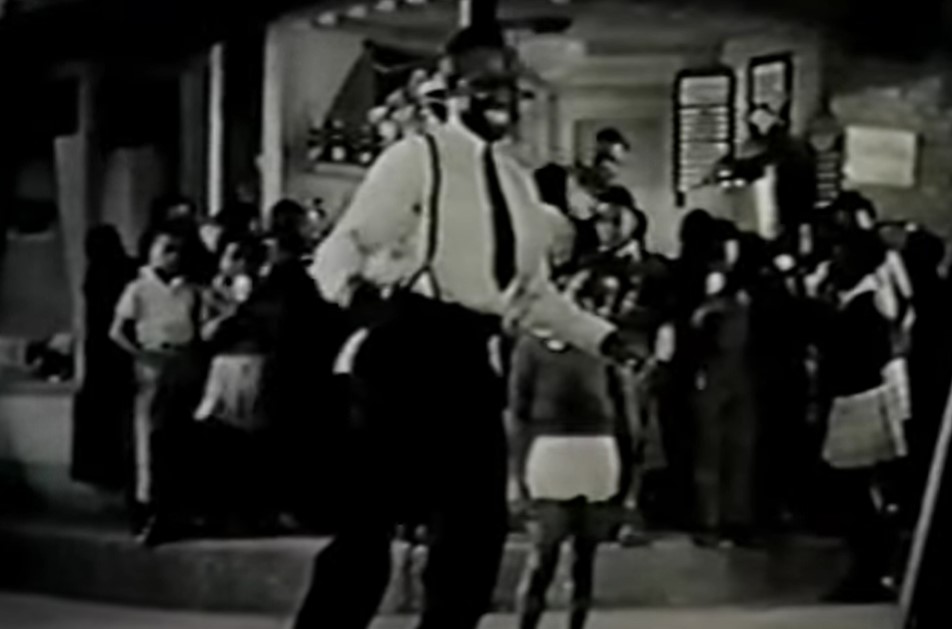 Twentieth Century, One Mile from Heaven (1937)
Twentieth Century, One Mile from Heaven (1937)
31. He Had A Temper
In spite of Robinson’s attempts to avoid playing Black stereotypical roles, one writer in the Black publication The New York Age called Robinson an “Uncle Tom”. Robinson got angry, grabbed his pistol, and marched up to the offices of the newspaper. Luckily Robinson made his point without having to fire.
Robinson seemed to always be in a battle. Next, he was just fighting for his life.
32. He Got Swept Away
In 1935, Robinson was back with Temple and making The Littlest Rebel. In one scene, Robinson had to cross a flowing river. While filming, Robinson and a co-star got swept up in the raging current and had to frantically swim for their lives. There was no reward for Robinson risking his life for the film. The scene was completely cut from the movie.
Robinson was giving his all to Hollywood, but Hollywood treated him worse. They continued to treat him like a second class citizen.
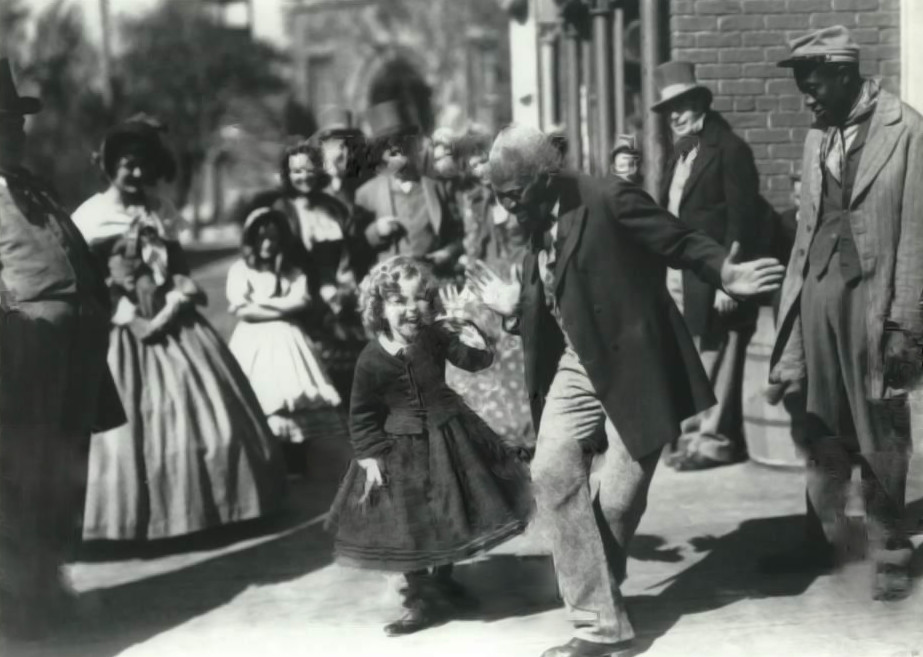 Fox Film Corporation, Wikimedia Commons
Fox Film Corporation, Wikimedia Commons
33. He Told Her The Truth
Another film Robinson made with Temple was Rebecca of Sunnybrook Farm. While filming, Temple’s accommodation was in a very exclusive hotel. When Temple innocently asked Robinson where his room was, Robinson told her that didn’t have a proper room. Temple didn’t understand at the time, but she later found out the shocking truth.
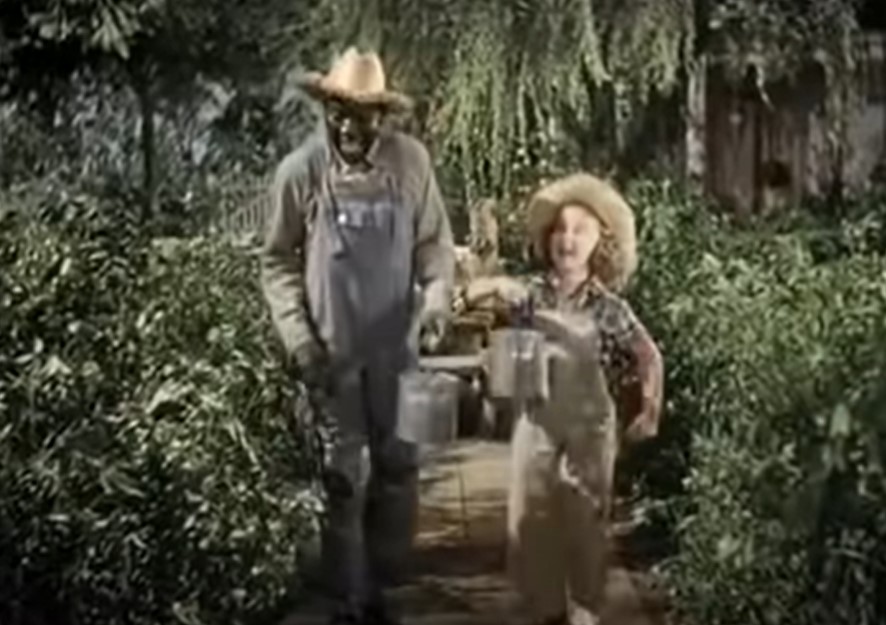 Twentieth Century, Rebecca of Sunnybrook Farm (1938)
Twentieth Century, Rebecca of Sunnybrook Farm (1938)
34. He Couldn’t Stay There
The reason that Robinson didn’t have a proper room at the hotel was because the establishment was restricted to white people only. Even though Robinson was starring in a film, he had to take a makeshift room above the garage as his accommodation. Later in his life, Robinson came up with a very clever way to deal with this kind of intolerance.
35. He Wouldn’t Leave
A restaurant manager, responding to a customer complaint, once asked Robinson to leave a restaurant because of his race. The story goes that Robinson asked the manager for a $10 bill. The manager obliged, and Robinson added six more $10 bills to the pile and asked the manager if he could tell him which one was the colored one.
The manager relented, and Robinson very much enjoyed his meal that night. One by one, Robinson was knocking prejudice out of the park. Next, on his agenda was a new arena.
36. He Started A Team
Around this time, there were no Black athletes allowed to play on the New York Yankees baseball team. Robinson was a huge fan, and he had an idea to fix this. Robinson found a financier and with him created the New York Black Yankees. Robinson was a hit with baseball fans, but his next try at athletics would be a definite miss.
37. He Was Just Trying To Help
In 1936, Black athlete Jesse Owens took home four medals at the Berlin Olympics, and he was looking for a way to carry on his career. Robinson stepped in to help and organized a race. The strange thing was that Robinson arranged for Owens’ opponent to be a horse. The outrage started quickly as many thought this was not a dignified event for an Olympic winner.
Robinson took on a huge amount of criticism for this blunder. As it turned out, there was more coming his way.
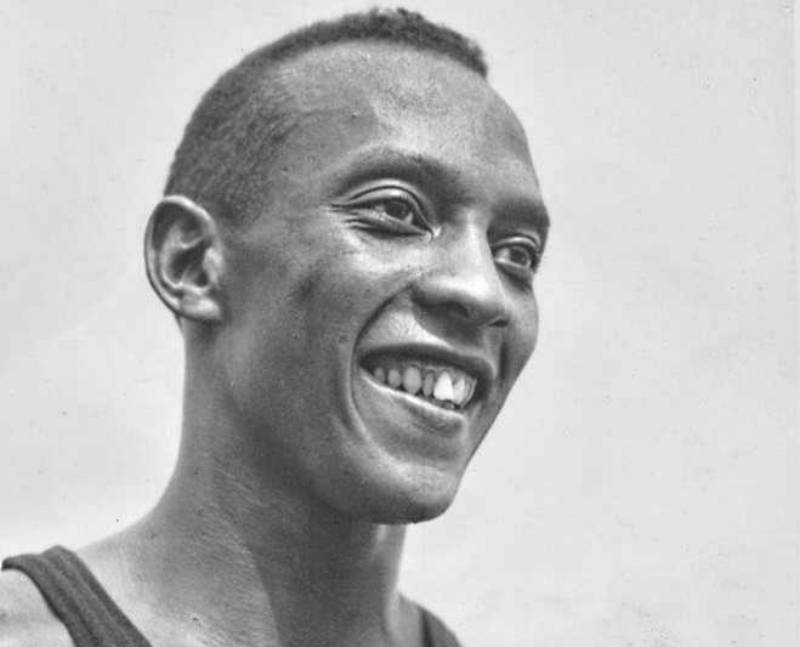 Acme News Photos, Wikimedia Commons
Acme News Photos, Wikimedia Commons
38. He Had Two Choices
In 1937, Robinson appeared in Café Metropole, and he had his choice between two dance partners. One was Jeni Le Gon, who he’d danced with before, and the other was Geneva Sawyer, who he’d met while working with Shirley Temple. When Robinson chose Sawyer, he got in a heap of trouble, and it was for an outrageous reason.
39. He Chose Wrong
The controversy behind Robinson’s choice was about race. You see, Robinson had chosen a white performer over a Black one. This caused the Black community to get upset, but it also caused a problem for producers of the film. Even though Robinson had danced with Temple, they didn’t think audiences were ready for a multi-racial couple who were both adults.
Robinson’s solution to this problem was completely off the wall.
40. He Had A Bonkers Solution
There were two possible solutions to this problem of a multi-race dance duo. Robinson could choose the Black dancer, or he could stick with the white one and deal with the consequences. Strangely, Robinson thought of a third and crazy choice. He got Sawyer to paint her face black. This pleased absolutely no one, and they cut the scene from the film.
This disappointment sent Robinson back to Broadway, where his performance actually stopped a show.
41. He Stunned Them
The Hot Mikado was an all-Black production of Gilbert and Sullivan’s The Mikado. When Robinson sang “My Object All Sublime” something strange happened. The show stopped. This was not a technical glitch, it was because the audience was stunned. Robinson received no less than eight encores for his performance.
Robinson had reclaimed Broadway. But after his next show, they may have been asking for it back.
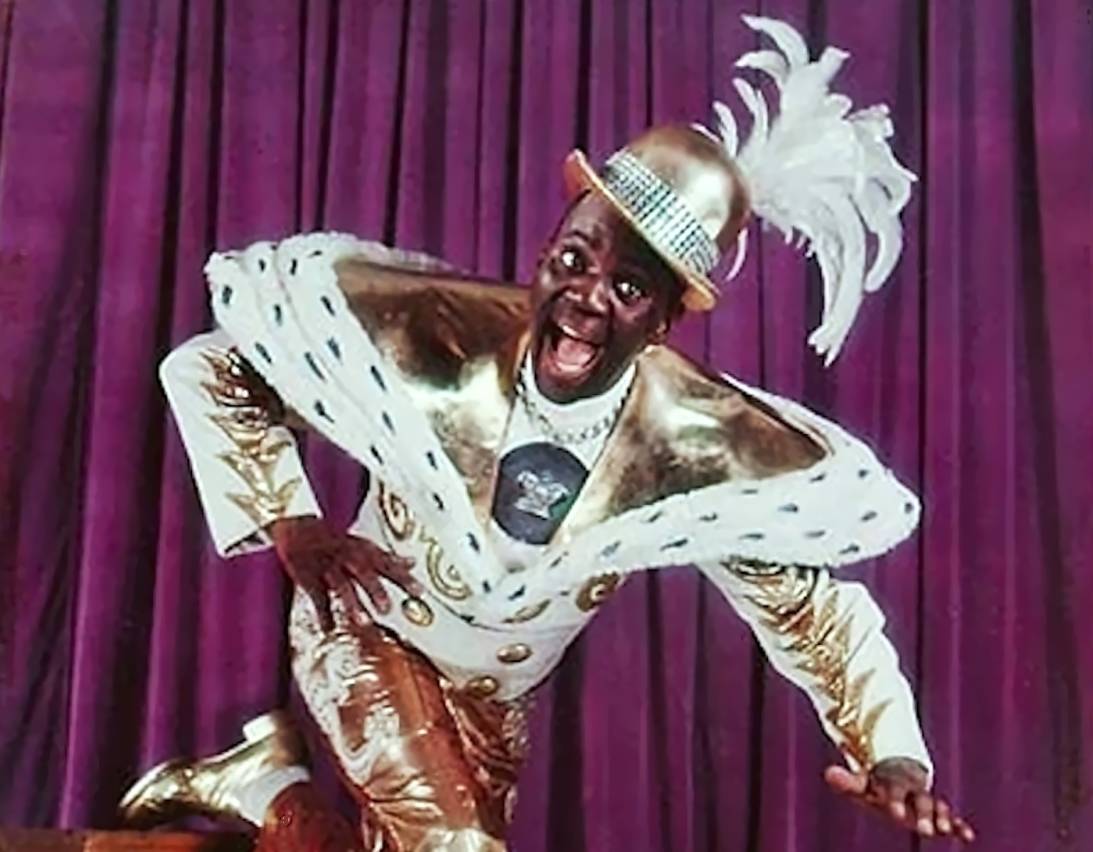 New York Sunday News, Wikimedia Commons
New York Sunday News, Wikimedia Commons
42. He Stood Out
Robinson became the lead in All in Fun only after the white lead actors all quit after poor previews. All in Fun ran for only four performances, but it was the first time a Black actor was the lead in a play where everyone else was white. The show was a flop, but Robinson had broken yet another barrier for Black people.
His next big reason to celebrate was something that all of us can relate to.
43. He Took A Long Walk
When he turned 61 years old, Robinson's celebration involved three things: dance, Broadway, and the number 61. On May 25, Robinson danced down Broadway for an astonishing 61 blocks. Robinson was clearly getting on in years, and he knew just what he had to do next.
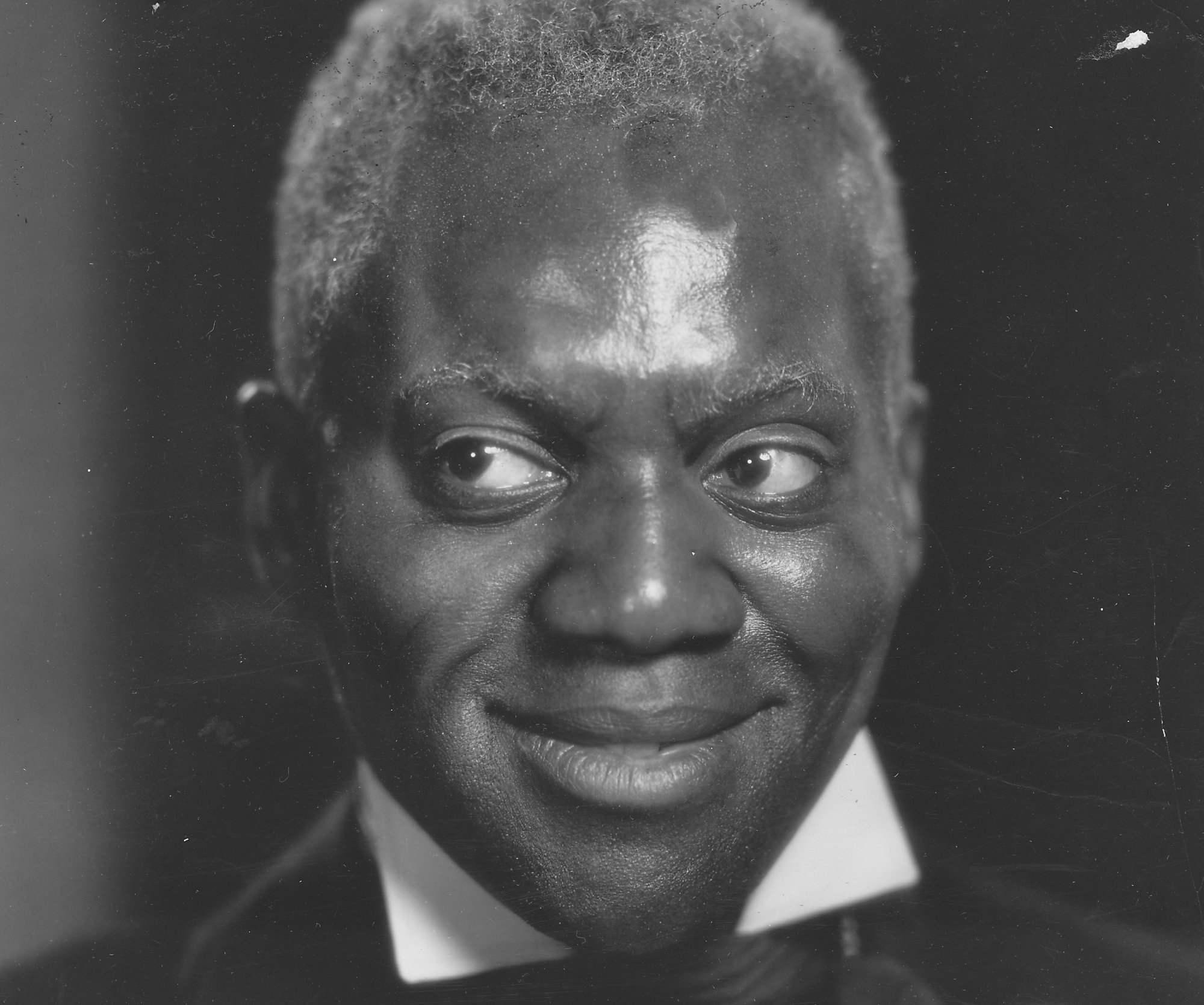 Afro Newspaper/Gado, Getty Images
Afro Newspaper/Gado, Getty Images
44. There Was An Age Gap
The 1943 film Stormy Weather apparently tells Robinson’s life story, but it was more “loosely based” on his life. One of the many things they added was a love interest that didn’t exist. The woman who played this mystery lady was Lena Horne, who was 39 years younger than Robinson.
Robinson didn’t mind. In fact, it gave him an idea for his real life.
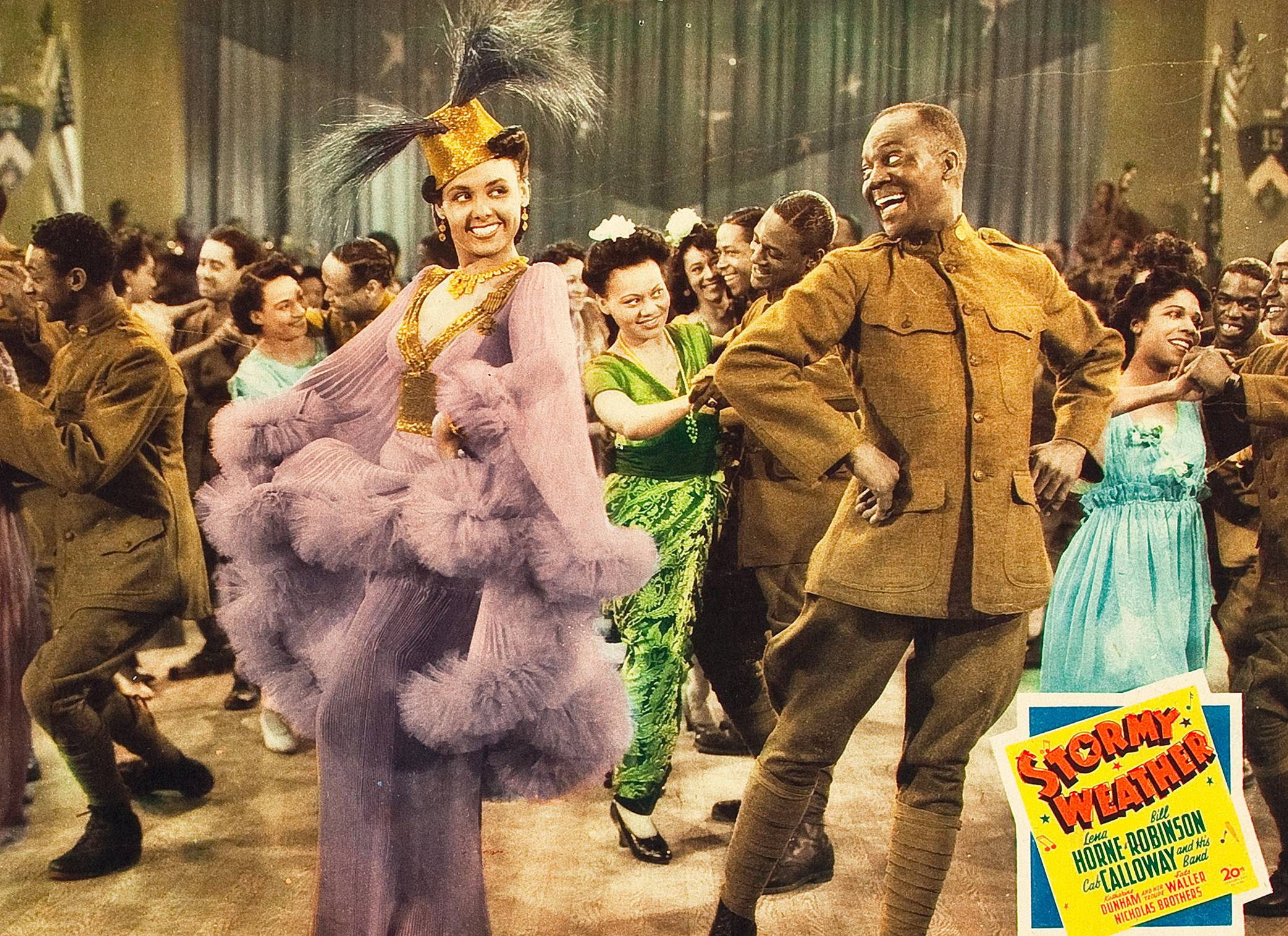 Twentieth Century, Wikimedia Commons
Twentieth Century, Wikimedia Commons
45. He Wanted A Younger Model
Just after making Stormy Weather with the much younger Lena Horne, Robinson divorced Fannie S Clay after over 20 years of marriage. In true Robinson style, he had a new wife waiting. This was dancer Elaine Plaines, and she was a whopping 42 years younger than him. To everyone’s surprise, the two stayed together for the rest of Robinson’s life.
Sadly, there wasn’t a lot of time left.
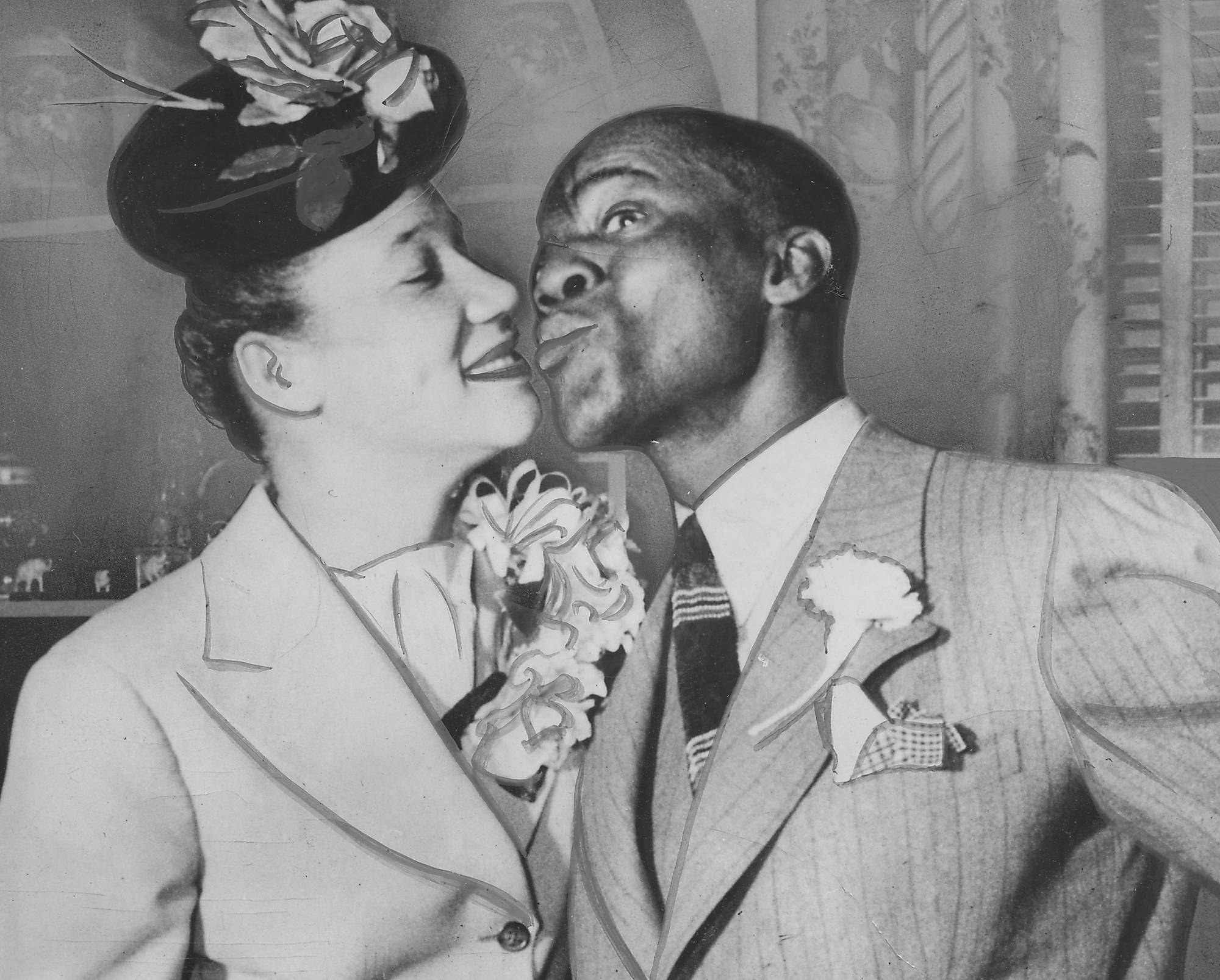 Afro Newspaper/Gado, Getty Images
Afro Newspaper/Gado, Getty Images
46. He Danced On The Ceiling
Near the end of his life, Robinson witnessed something that made him a very happy man. On April 15, 1947, Jackie Robinson broke the professional baseball color barrier and Black players were finally allowed to play. To celebrate, Robinson jumped on top of the players’ dugout and tapped out his glee.
This was a lifelong dream for Robinson. Tragically, he only had a few years left to enjoy it.
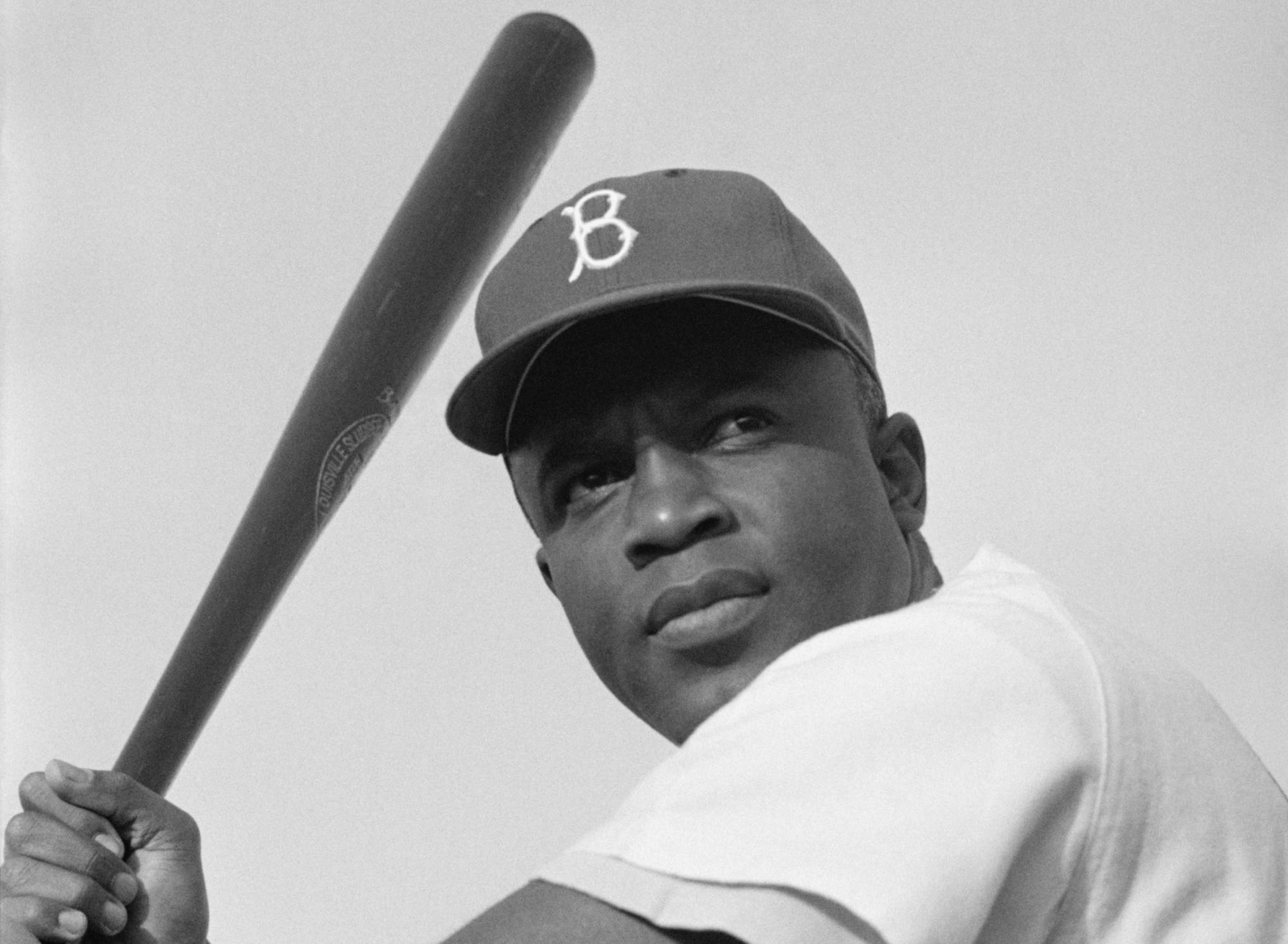 Bob Sandberg, Wikimedia Commons
Bob Sandberg, Wikimedia Commons
47. He Had Nothing
As he entered his 70s, Robinson had a series of heart attacks, and in 1949 he passed. Over his career, he’d earned upwards of $2 million and yet somehow he didn’t even have money for a funeral. Some blamed his many acts of generosity, while others blamed his gambling. He’d given his life to make America a fairer place, but with no money the public would surely forget him.
48. Someone Stepped Up
With all the good Robinson had done, it was no surprise when a good samaritan stepped forward. This was TV show host Ed Sullivan, and he generously—and quietly—picked up the tab for the funeral. When the day arrived, an astounding half a million people appeared to pay their respects. The New York City mayor was on hand to give the eulogy.
Yes, we would remember Robinson. Although, later, his legacy would get just a little foggy.
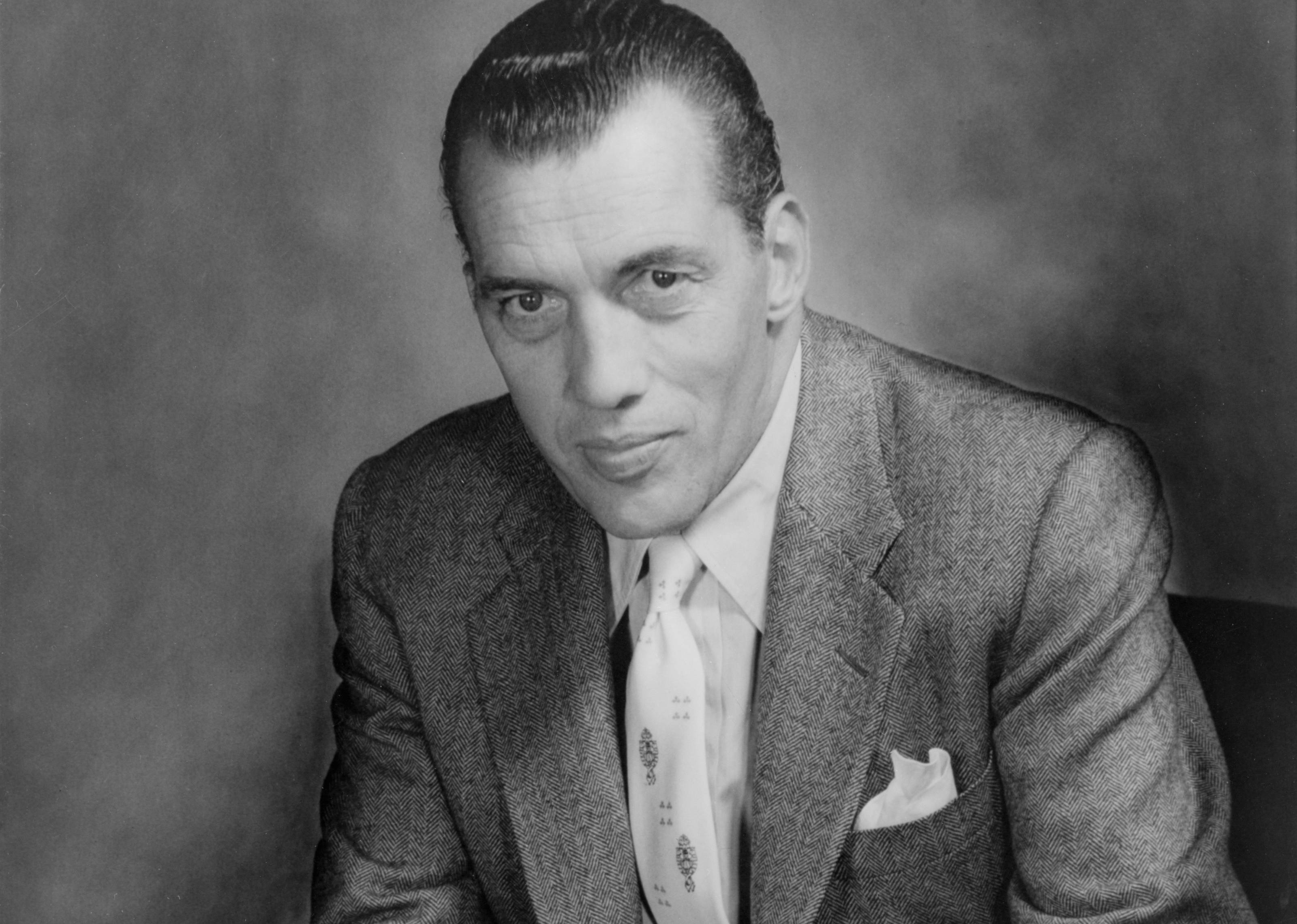 Maurice Carnes, Wikimedia Commons
Maurice Carnes, Wikimedia Commons
49. He’s Not The One
Most people know the 1968 folk song “Mr Bojangles". In fact, you may have even heard it playing with a video of Robinson dancing. The thing is, the song is not about Robinson. Songwriter Jerry Jeff Walker eventually set the record straight. His Mr Bojangles was a white street performer he'd met while behind bars, who’d borrowed the nickname from Robinson.
Okay, so there may not be a song about Robinson, but now we have a day just for him.
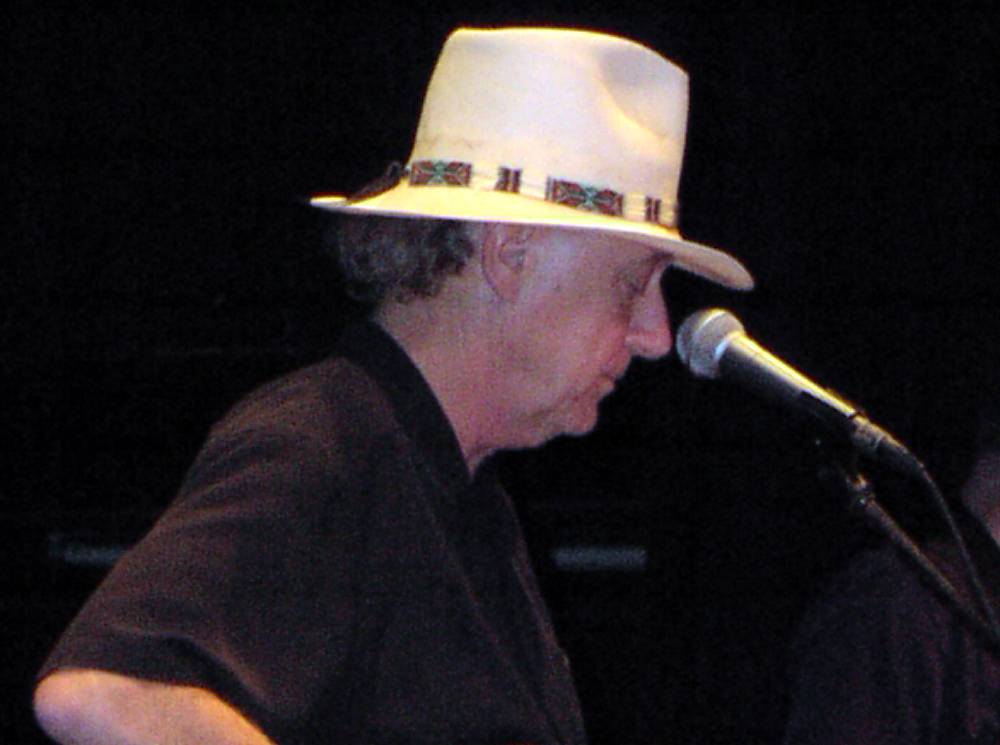 Duke53, CC BY-SA 3.0, Wikimedia Commons
Duke53, CC BY-SA 3.0, Wikimedia Commons
50. He Has His Own Day
In 1989, the US Congress remembered Robinson. As May 25 was his birthday, Congress had an idea to posthumously honor Robinson and his courageous life. They made May 25 National Tap Dance Day. On this day, tap dancing celebrations take place not only in America, but also in Australia, India, Japan, and even Iceland.

